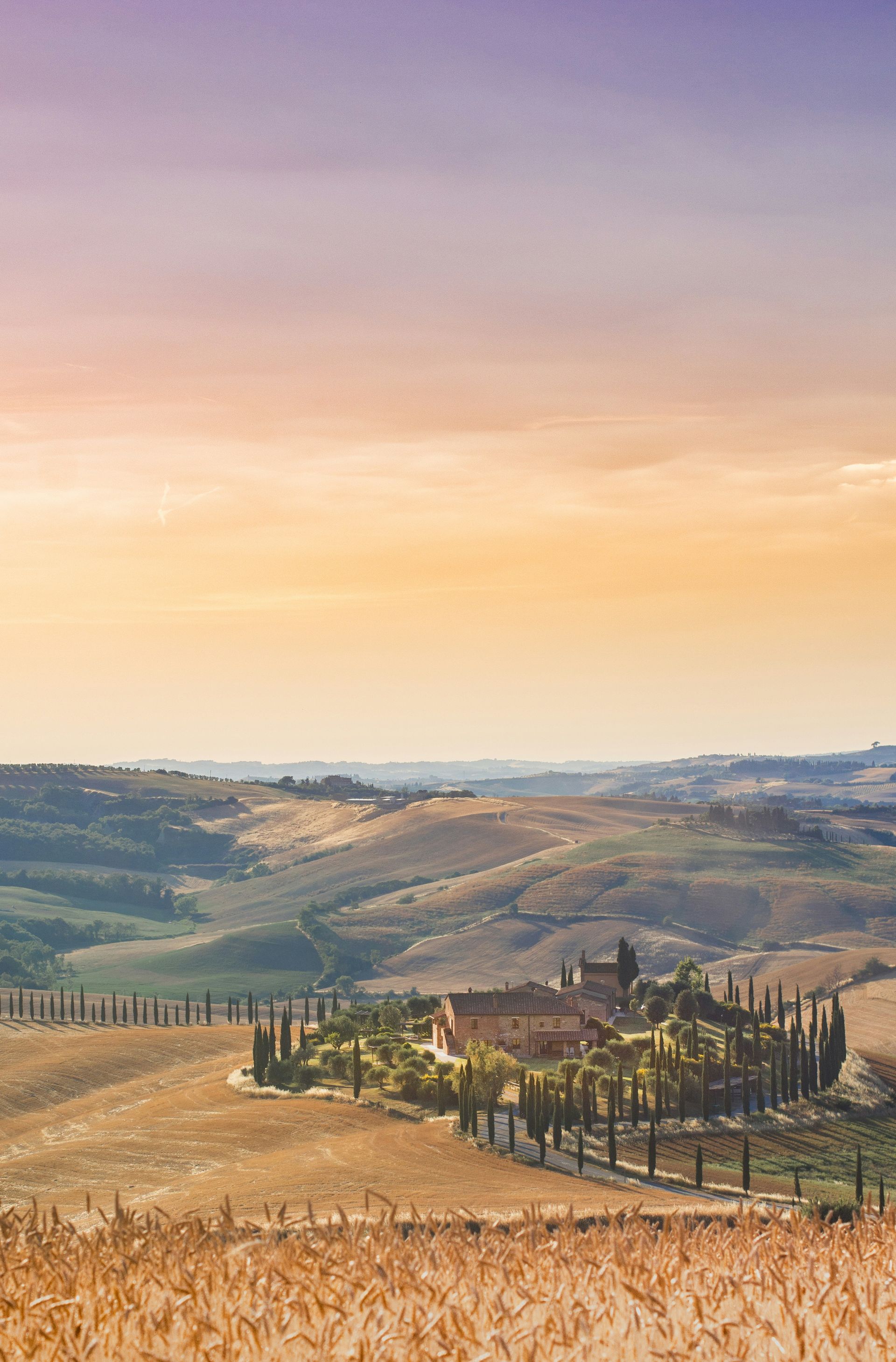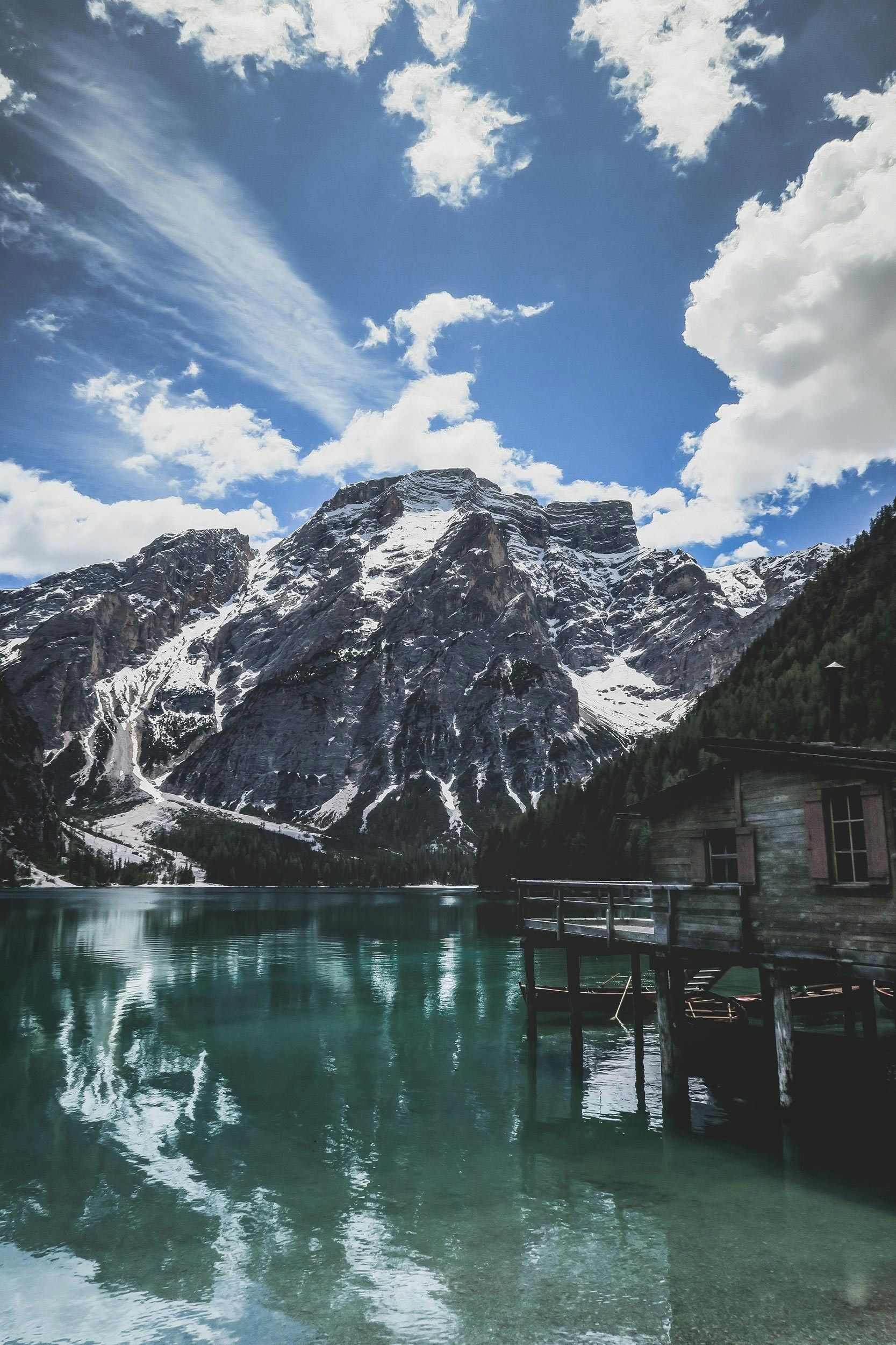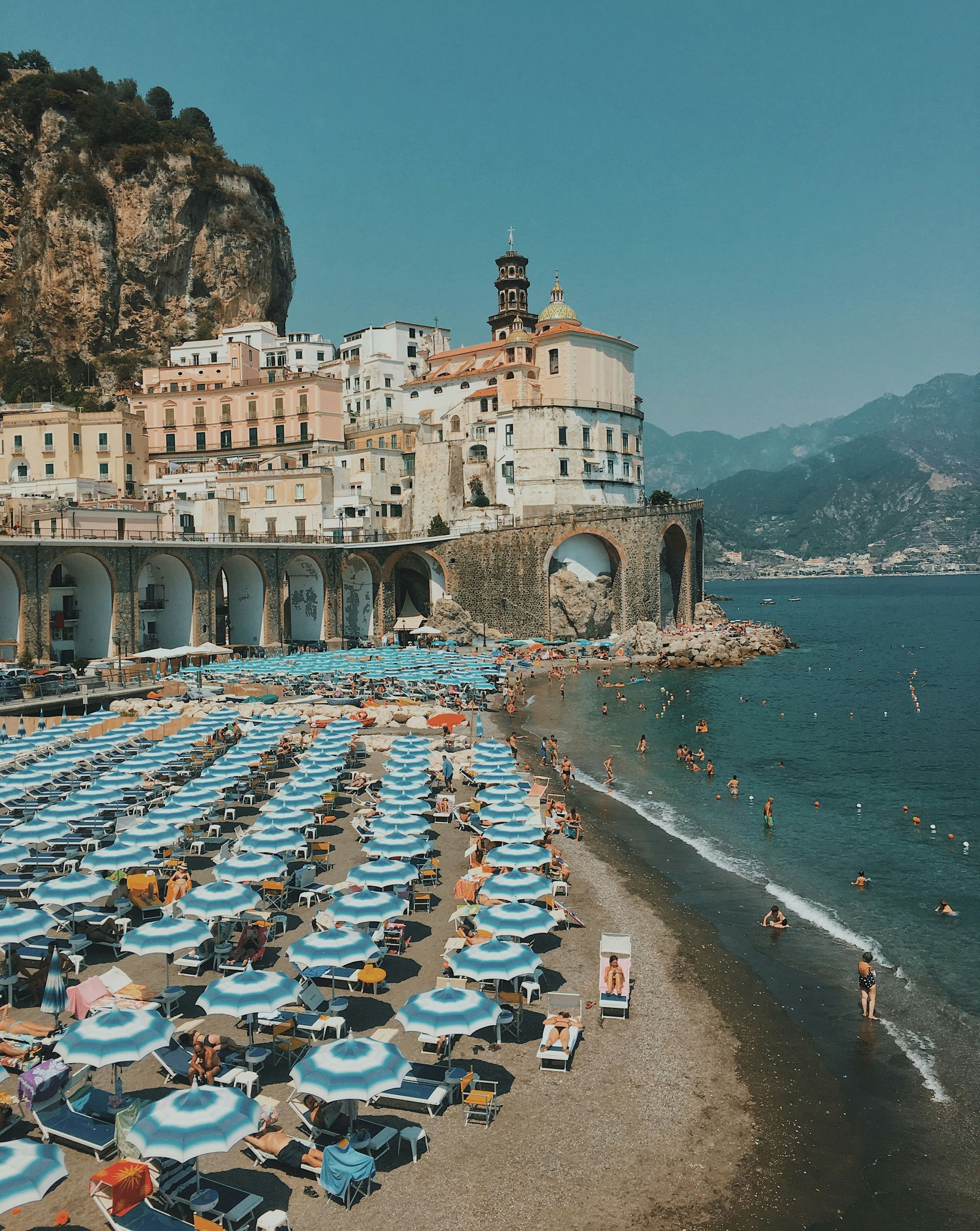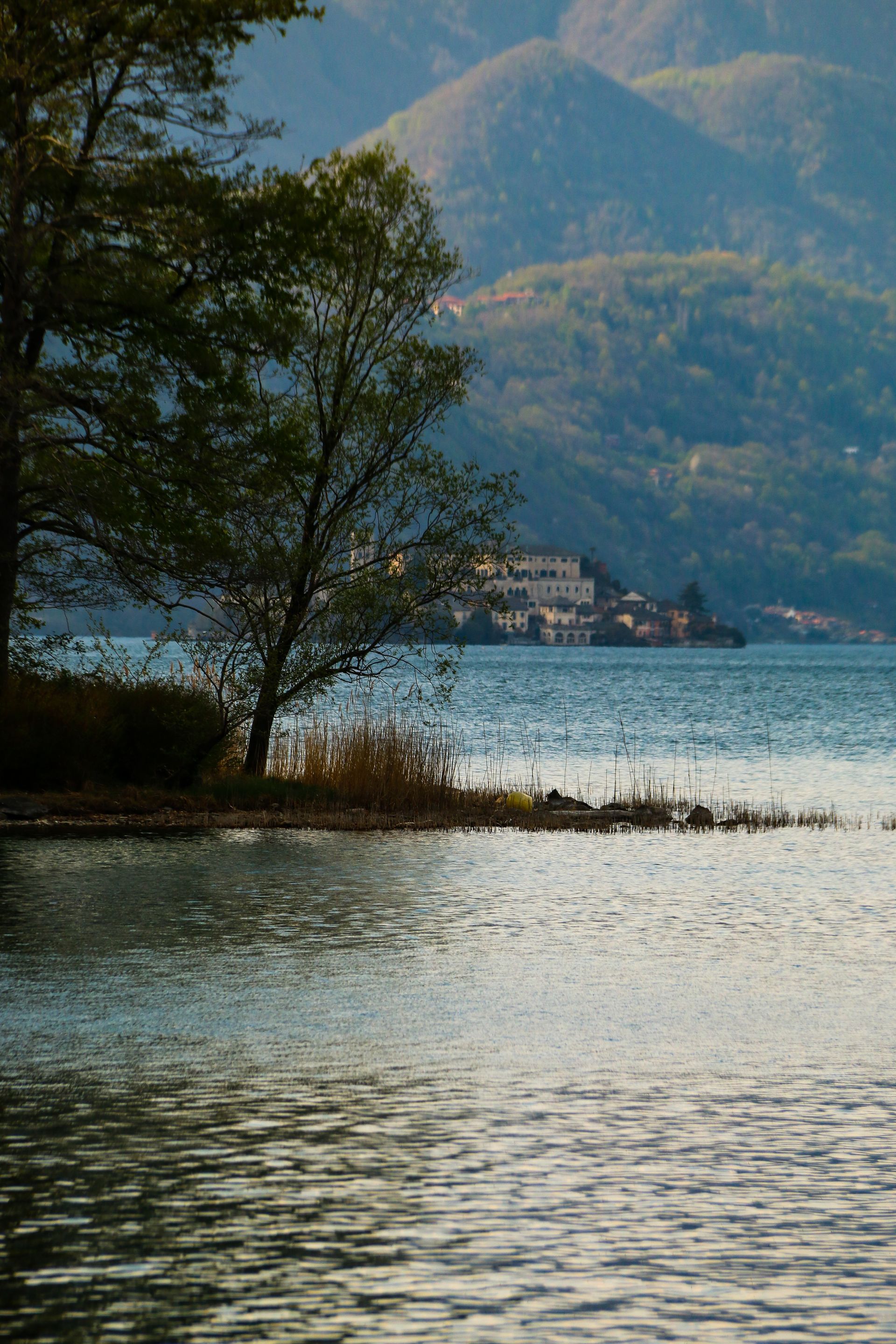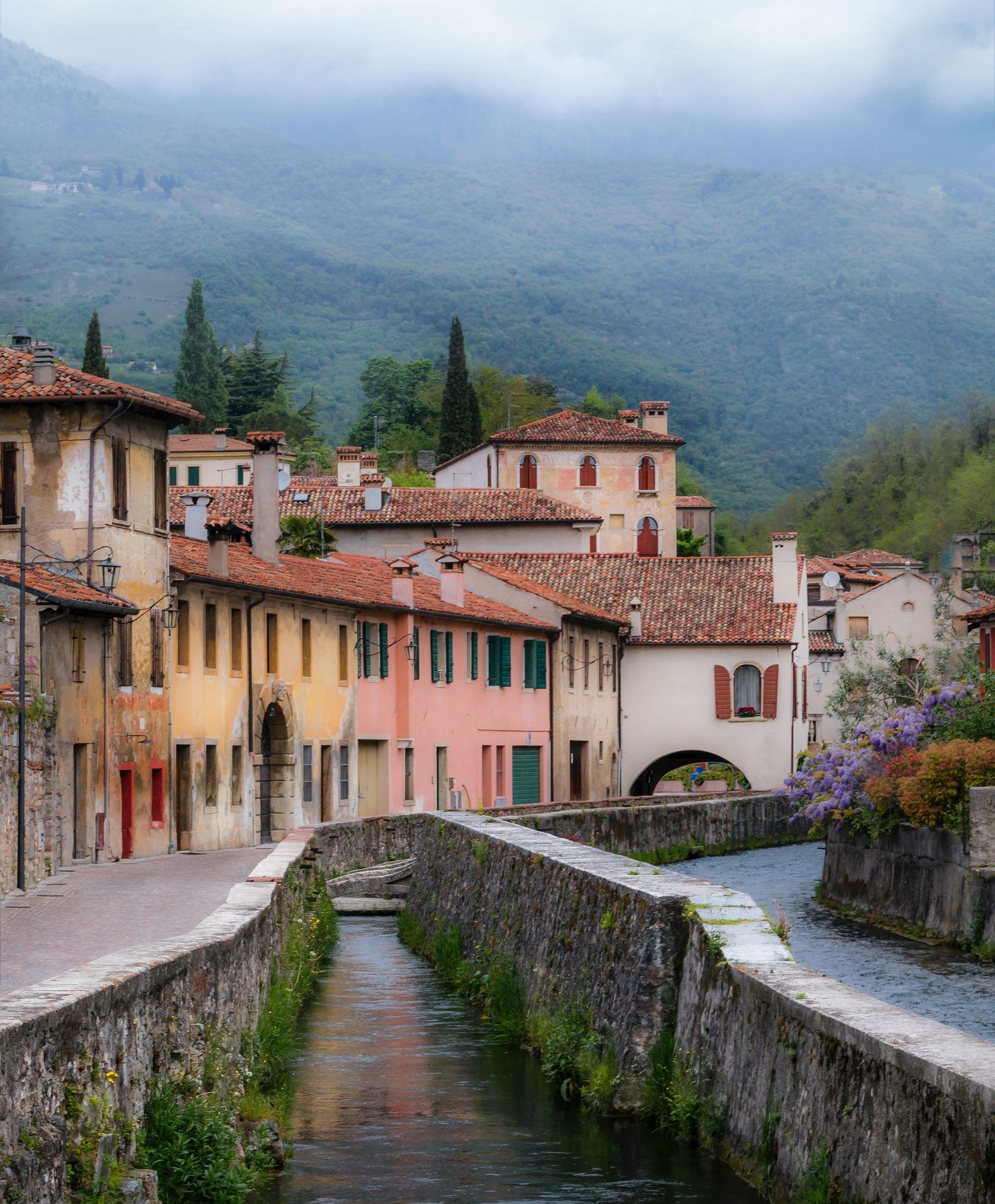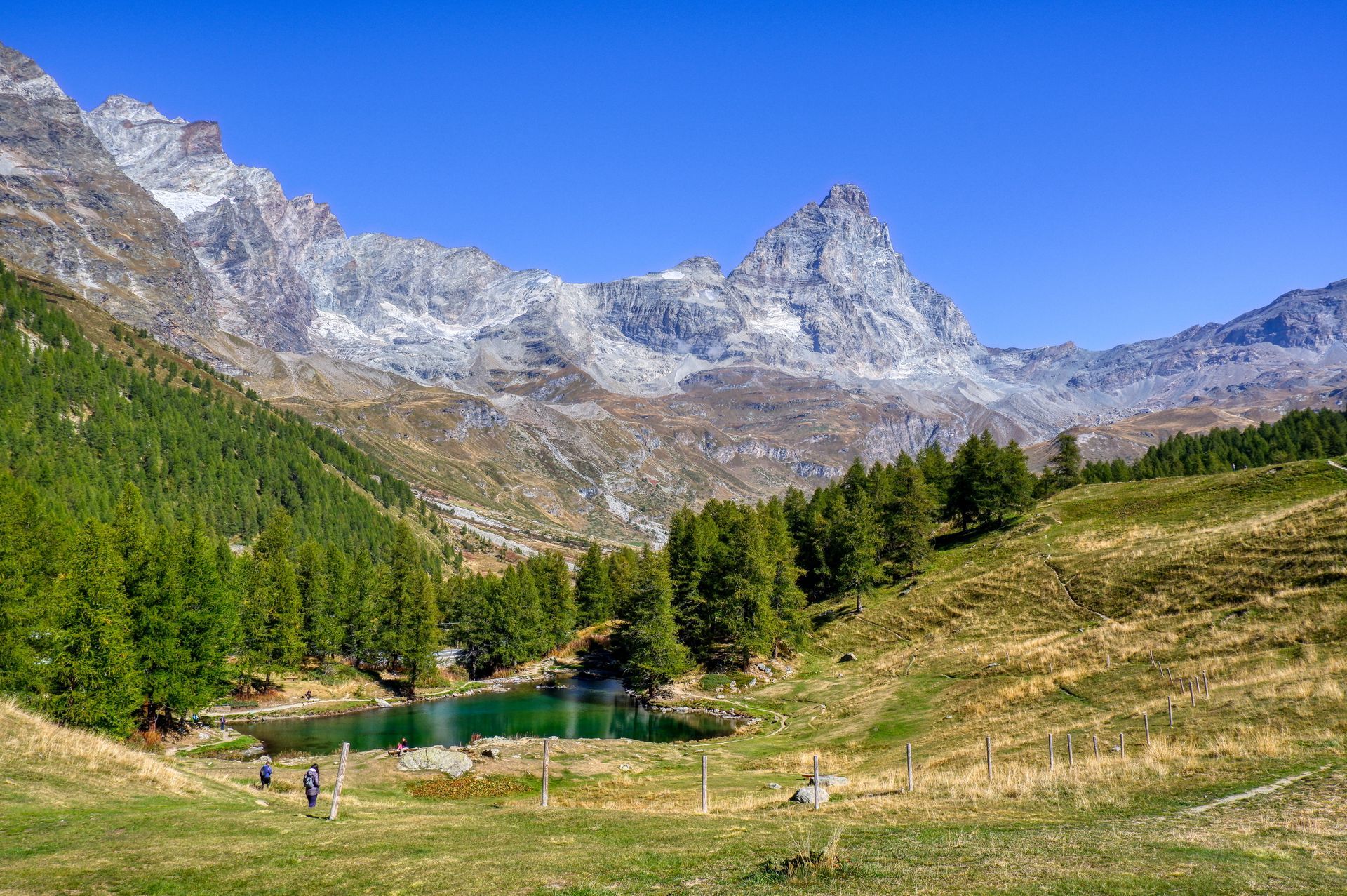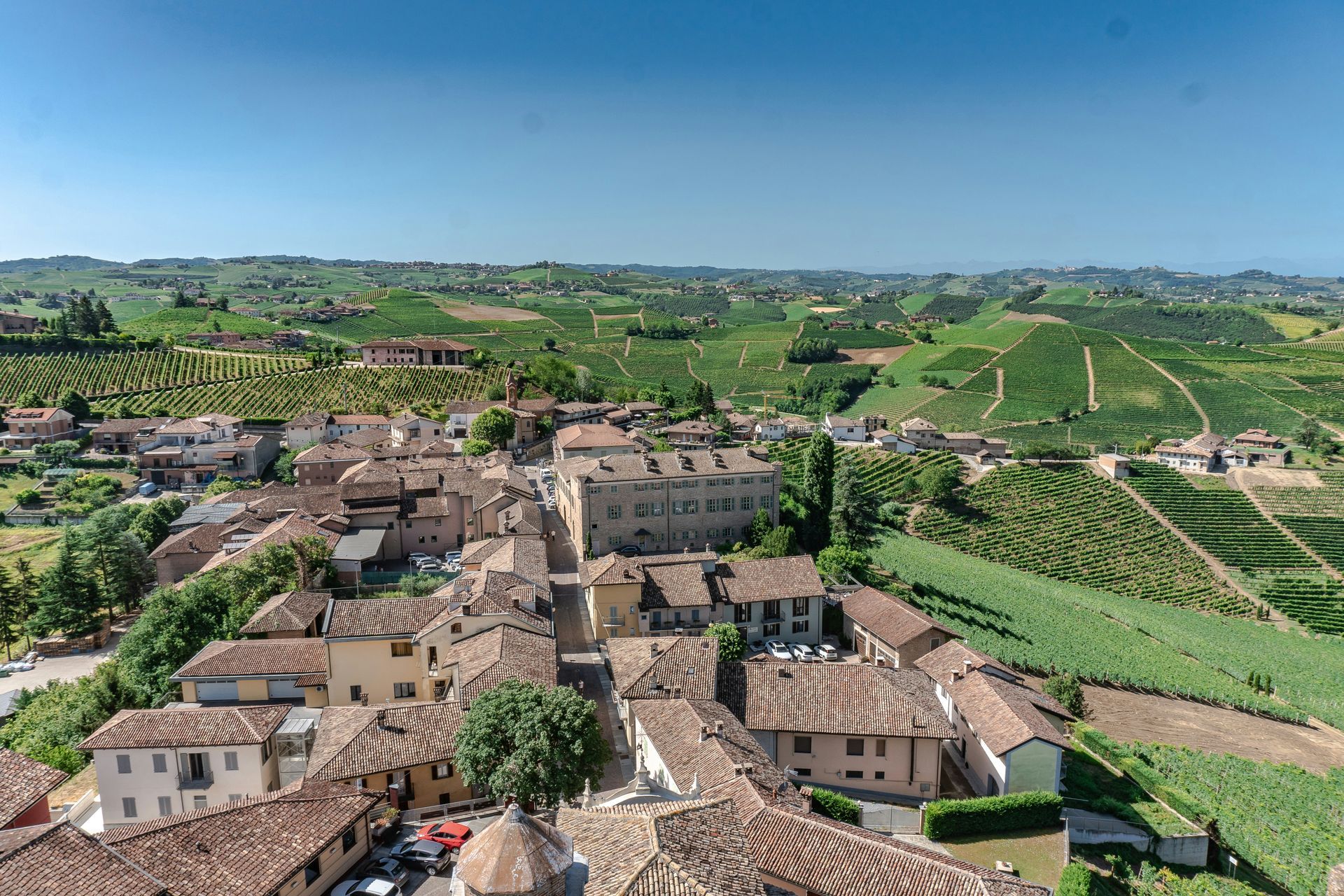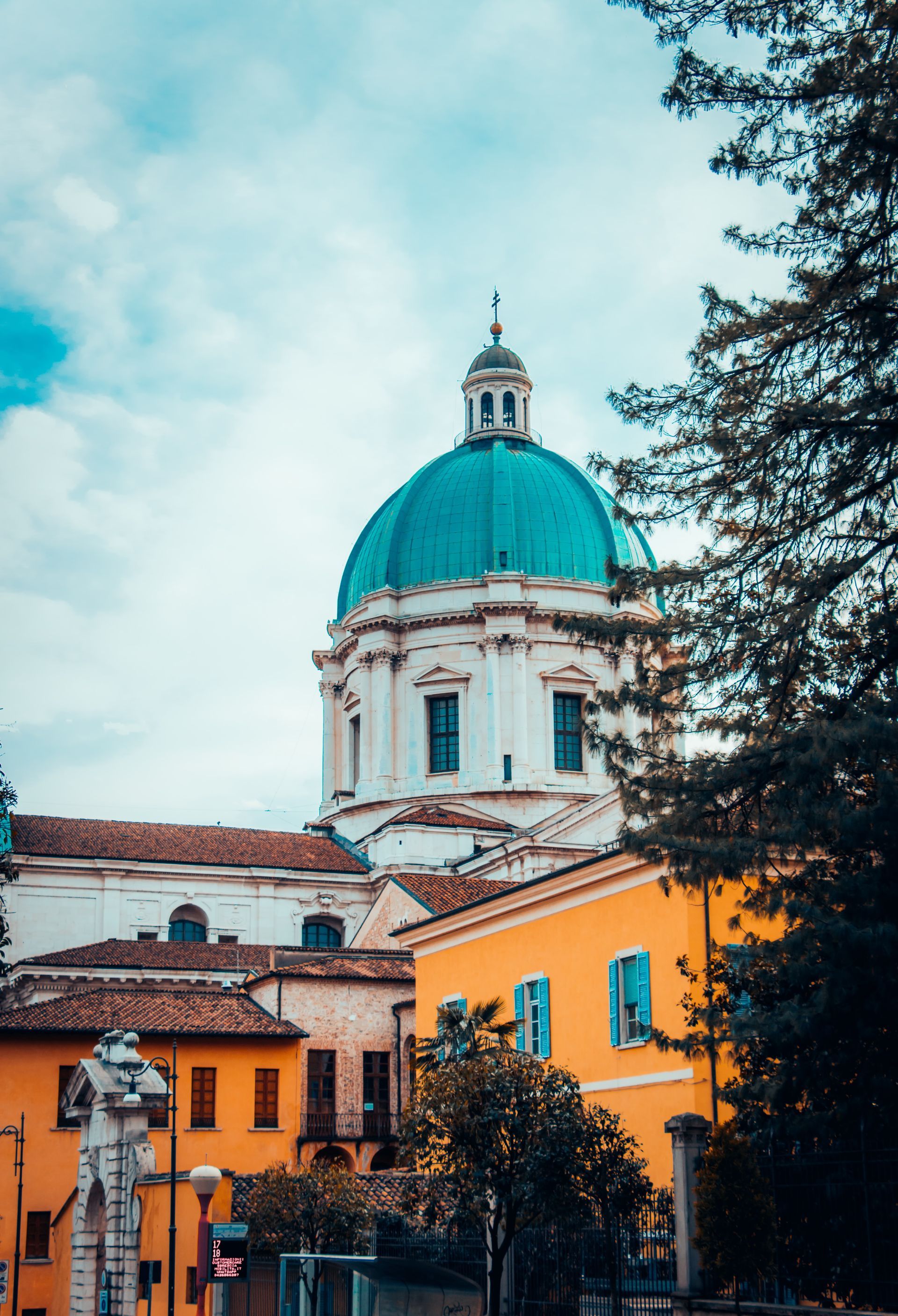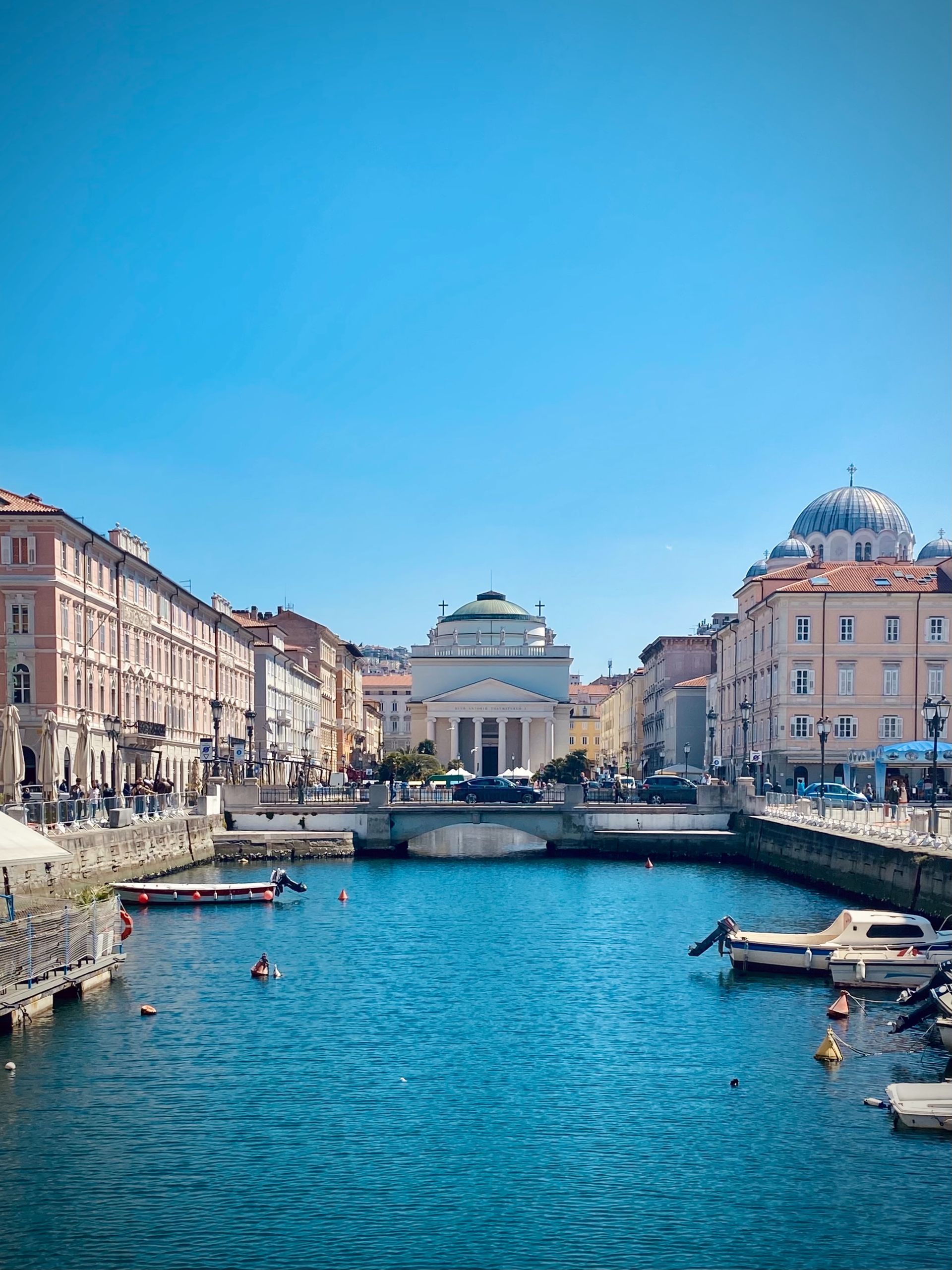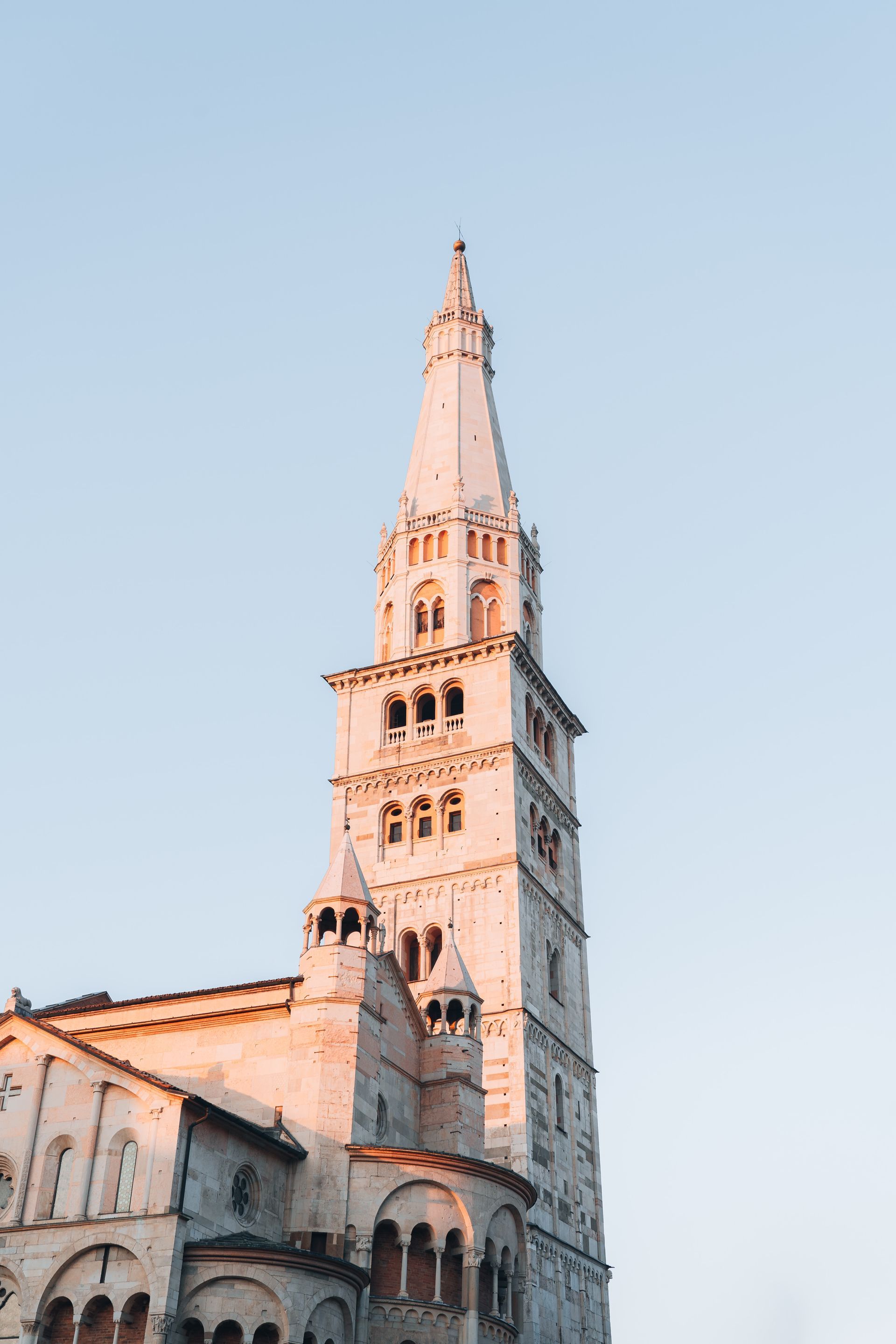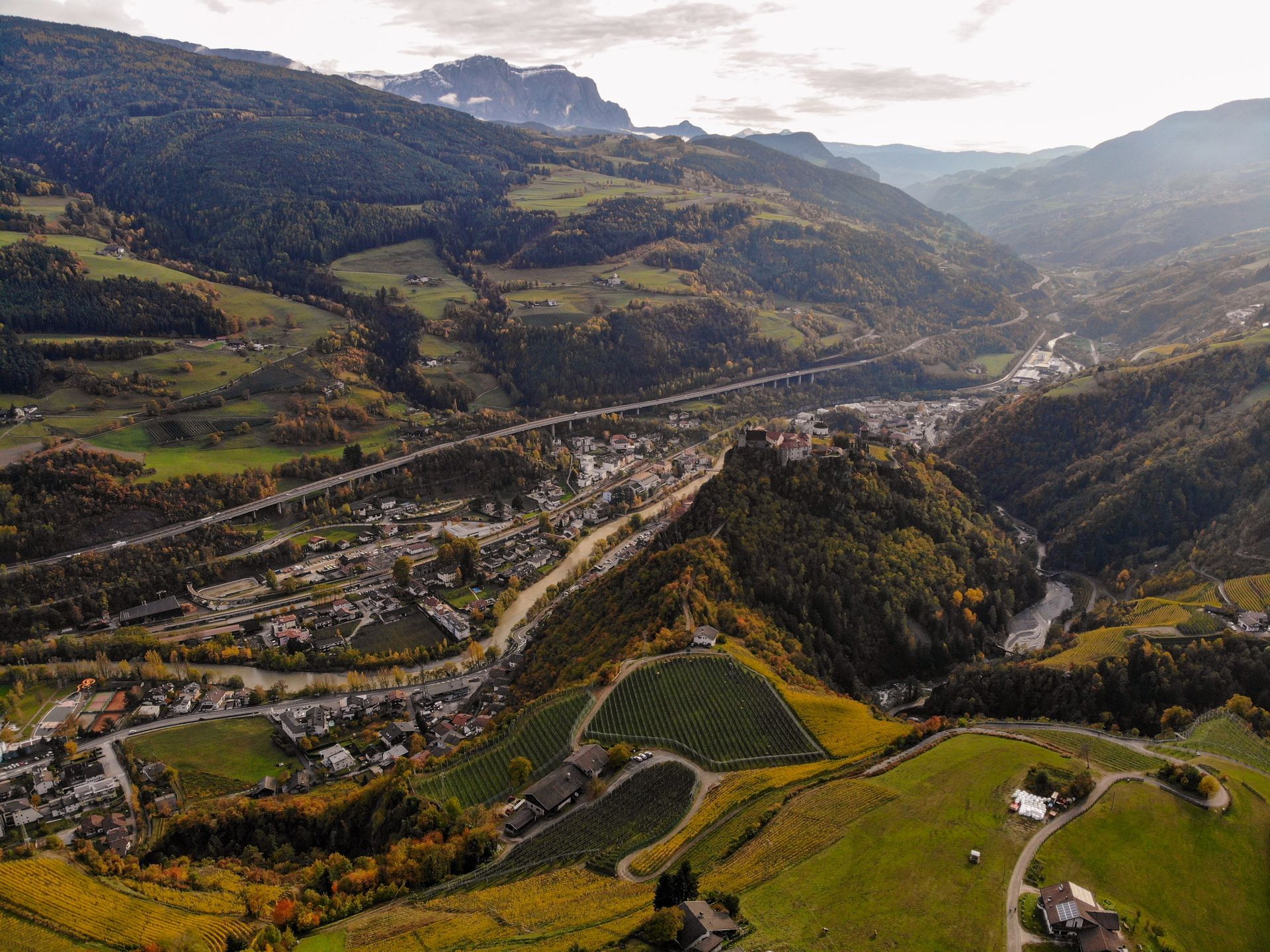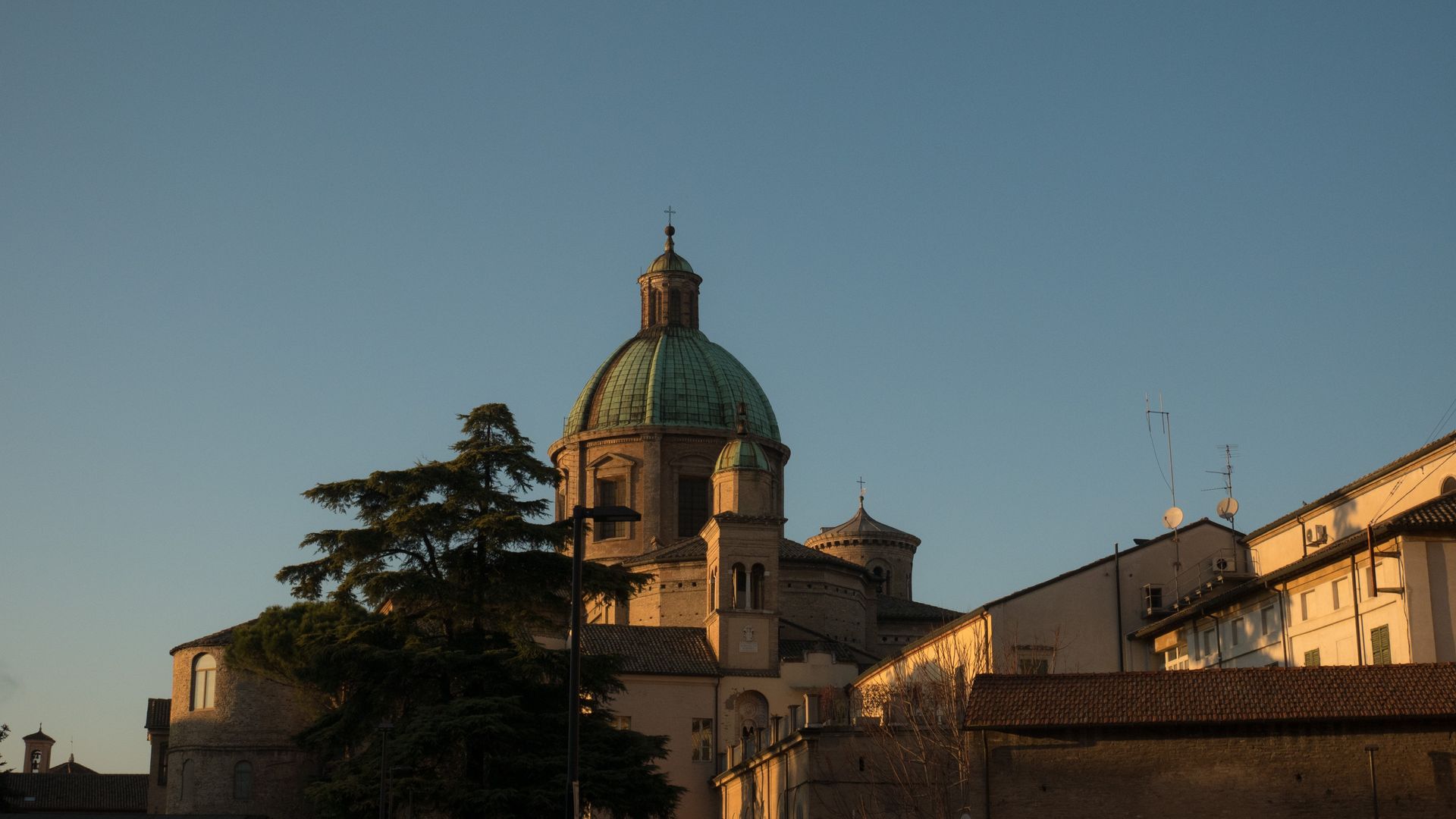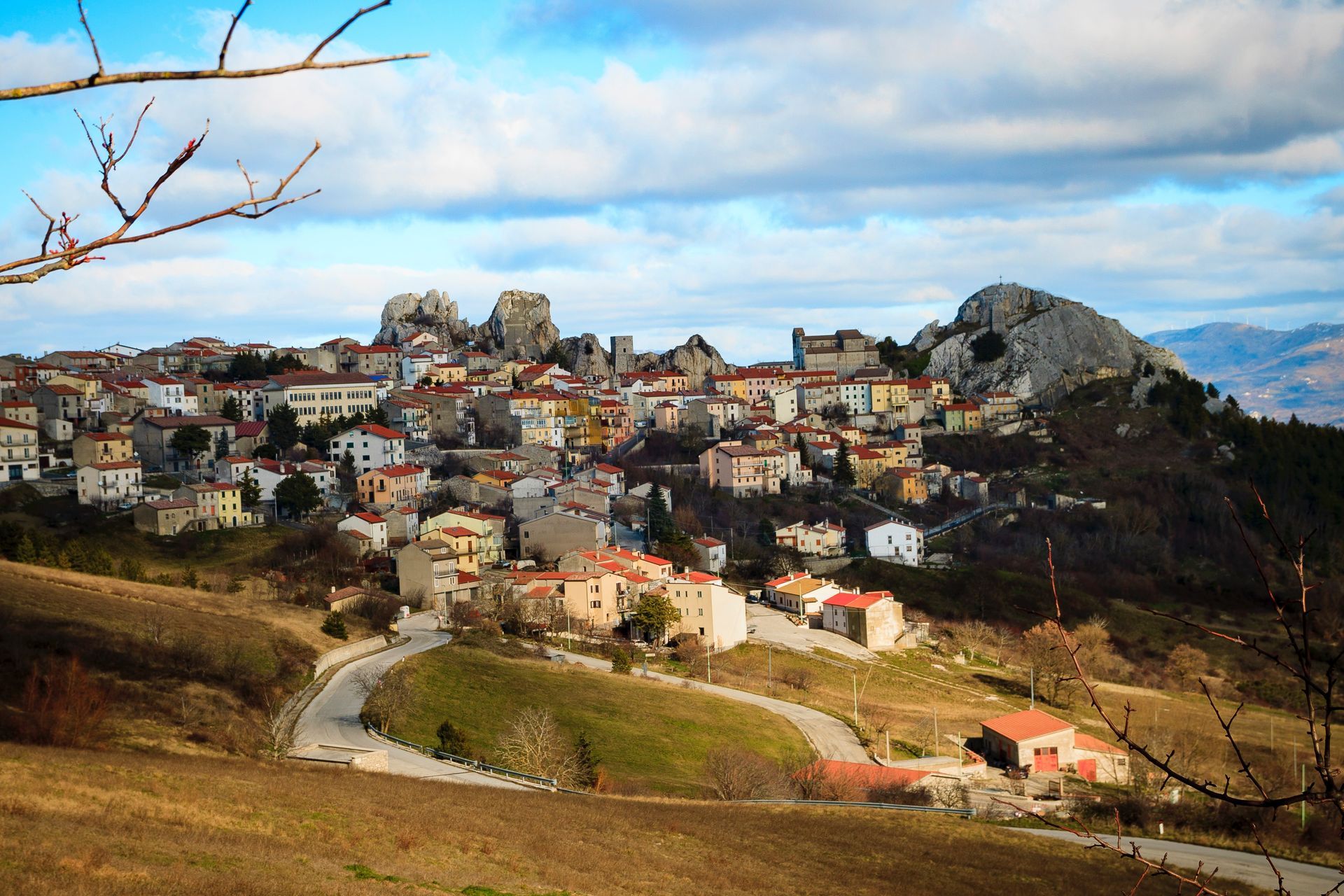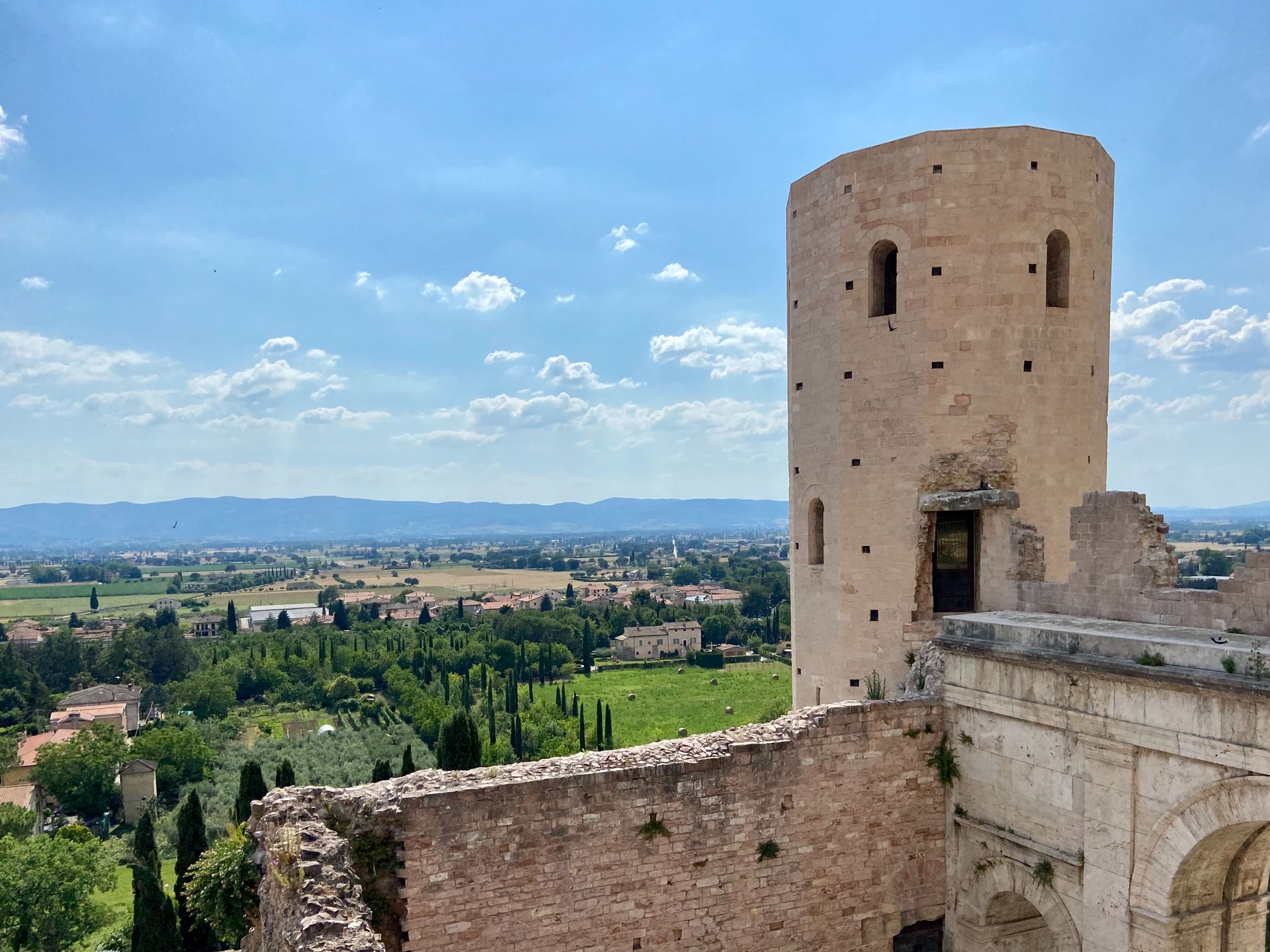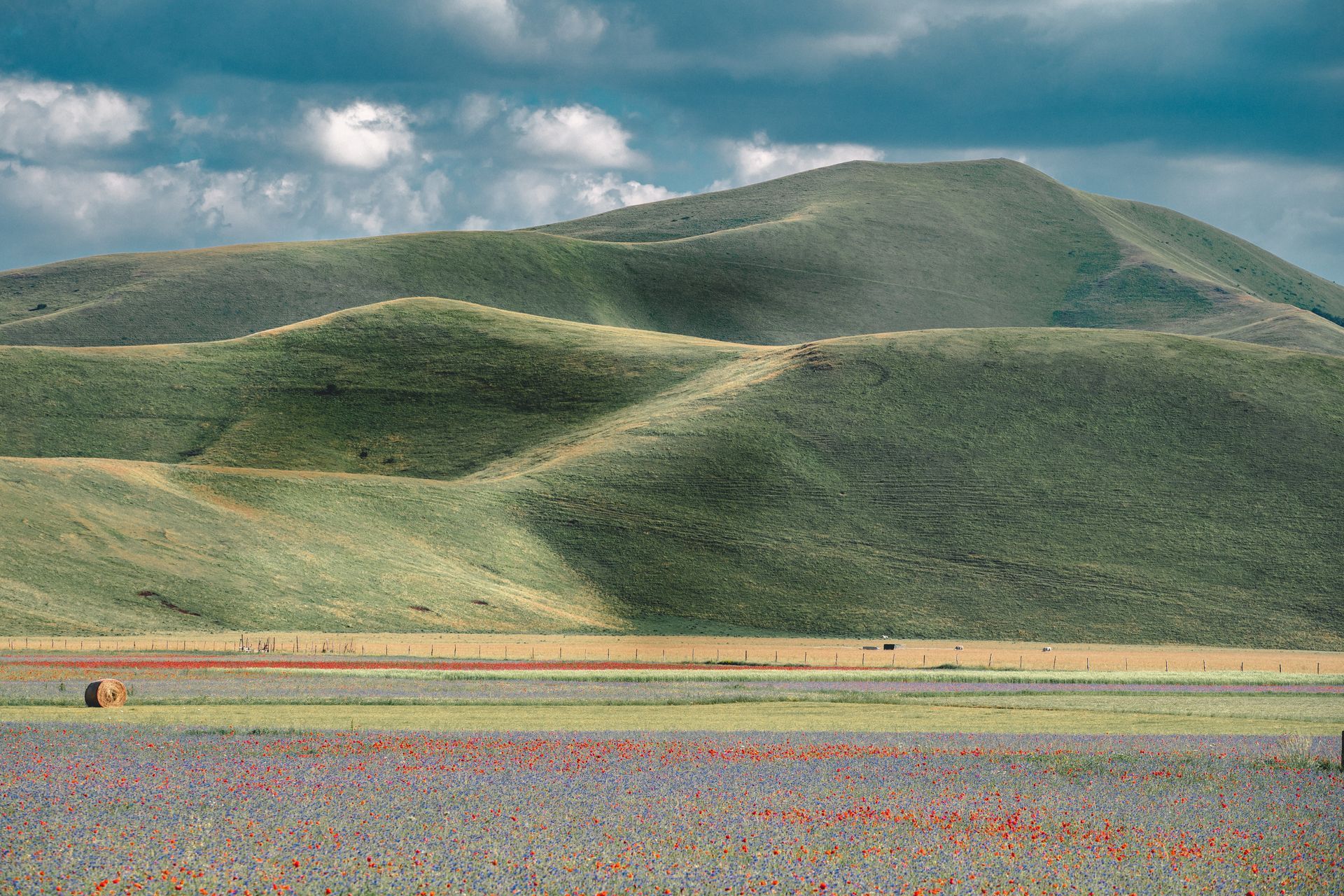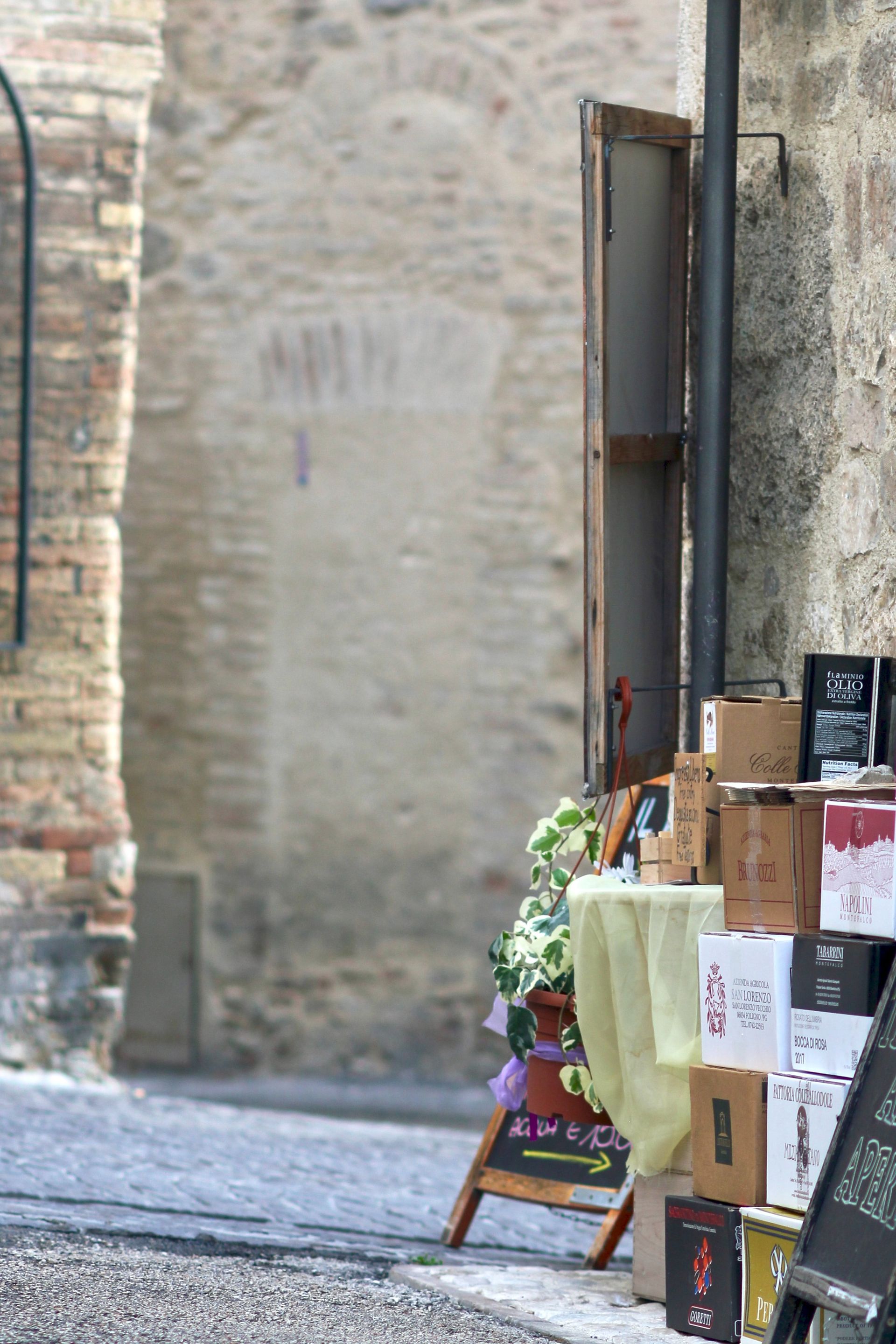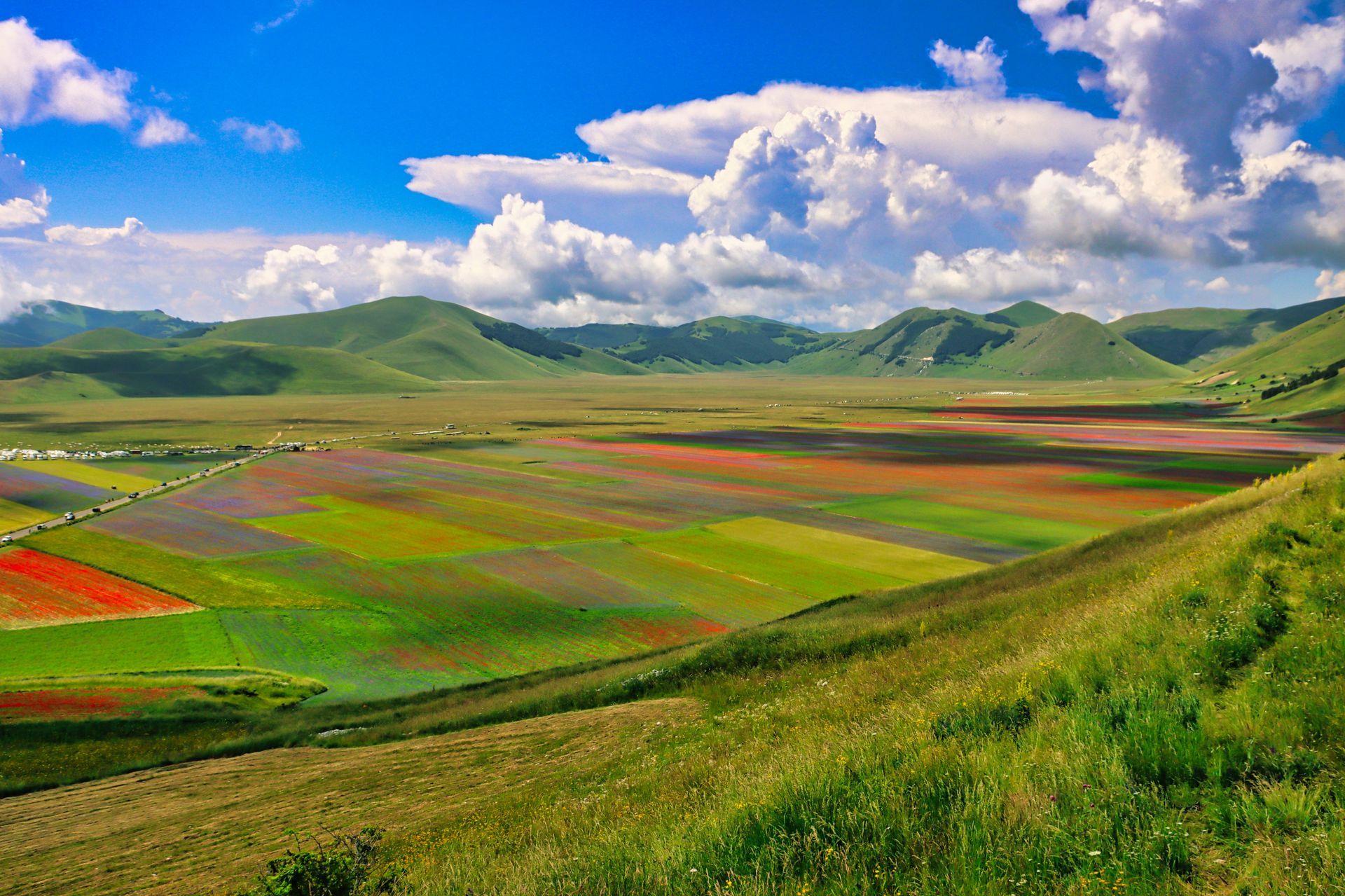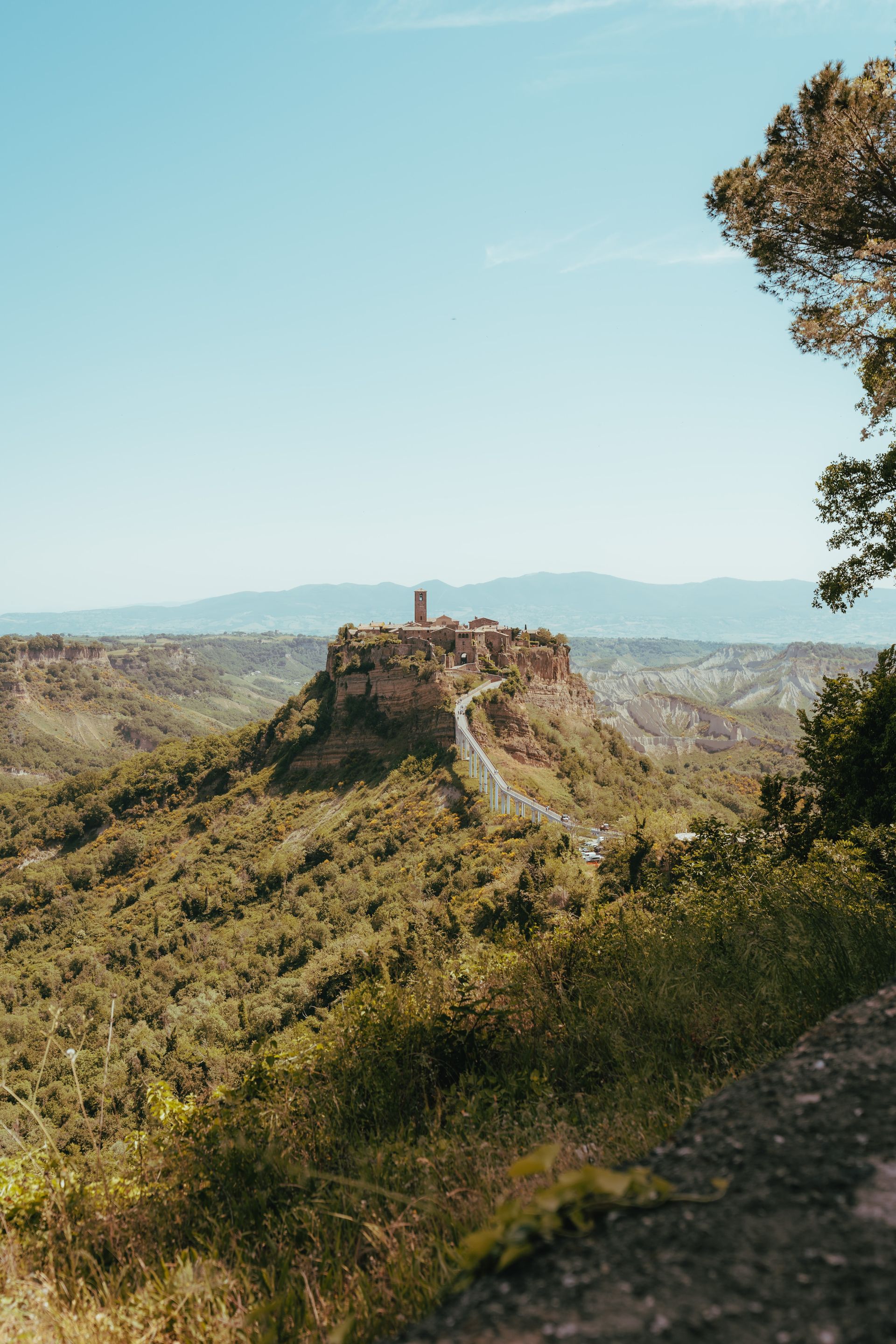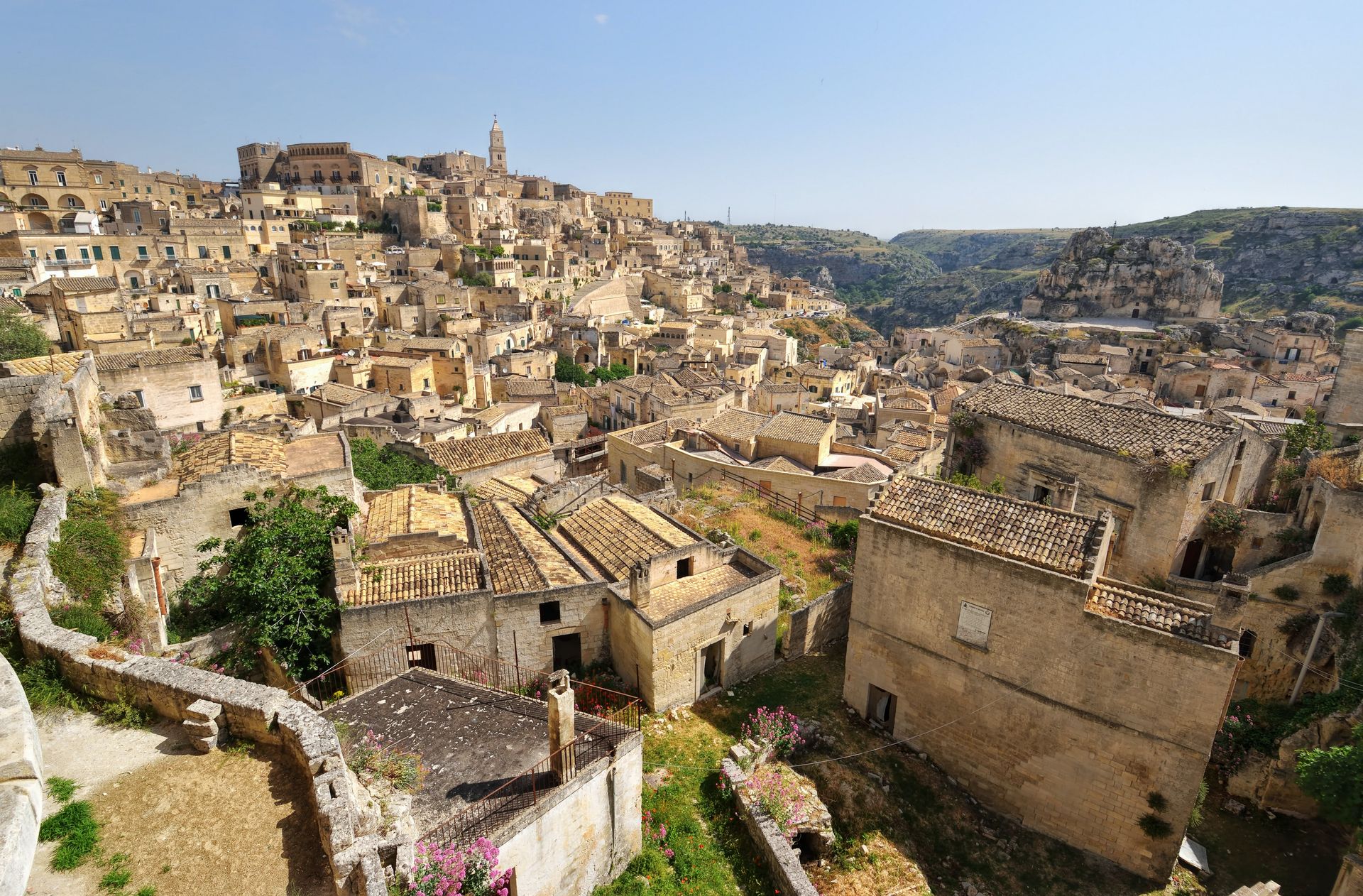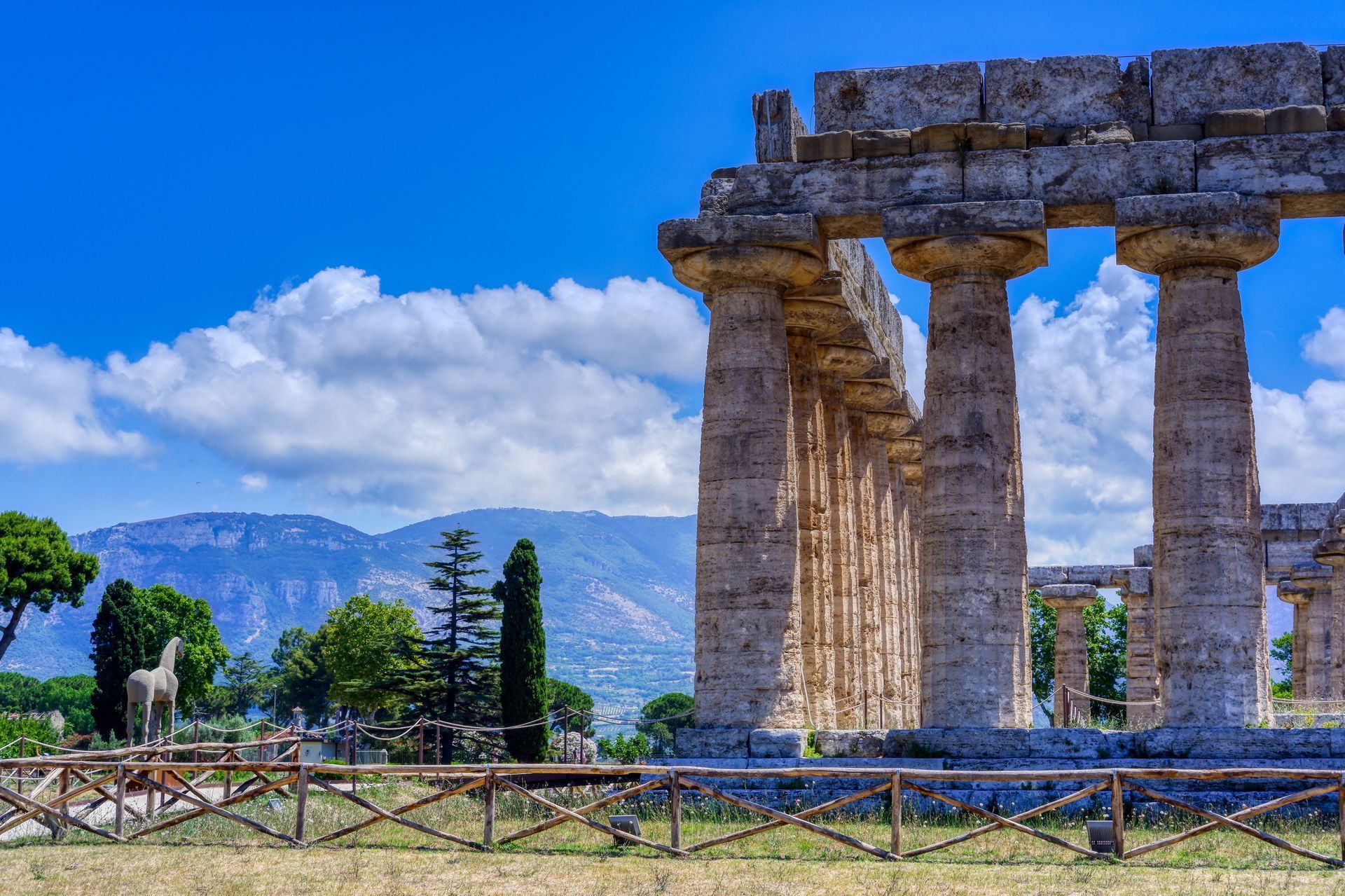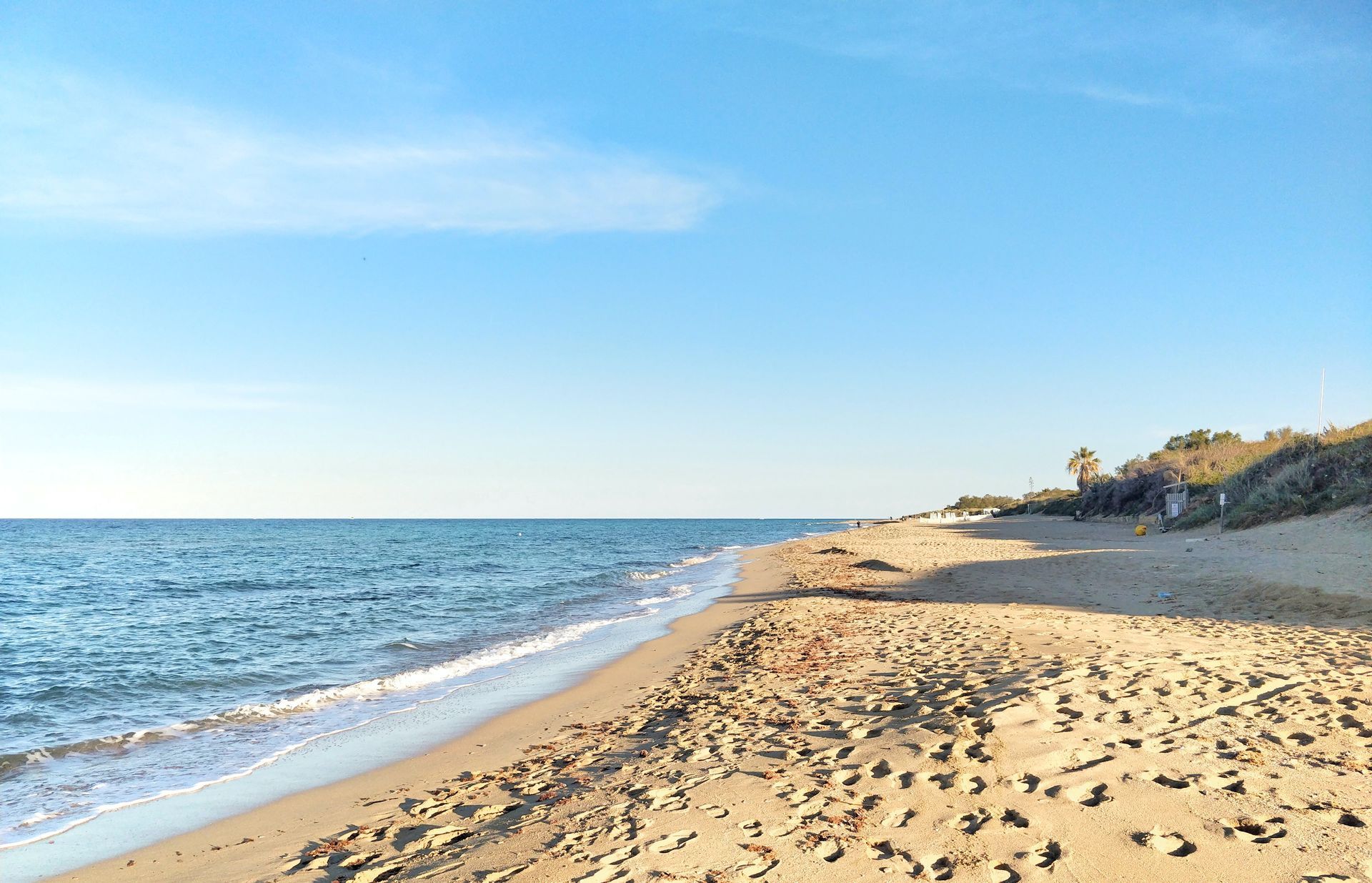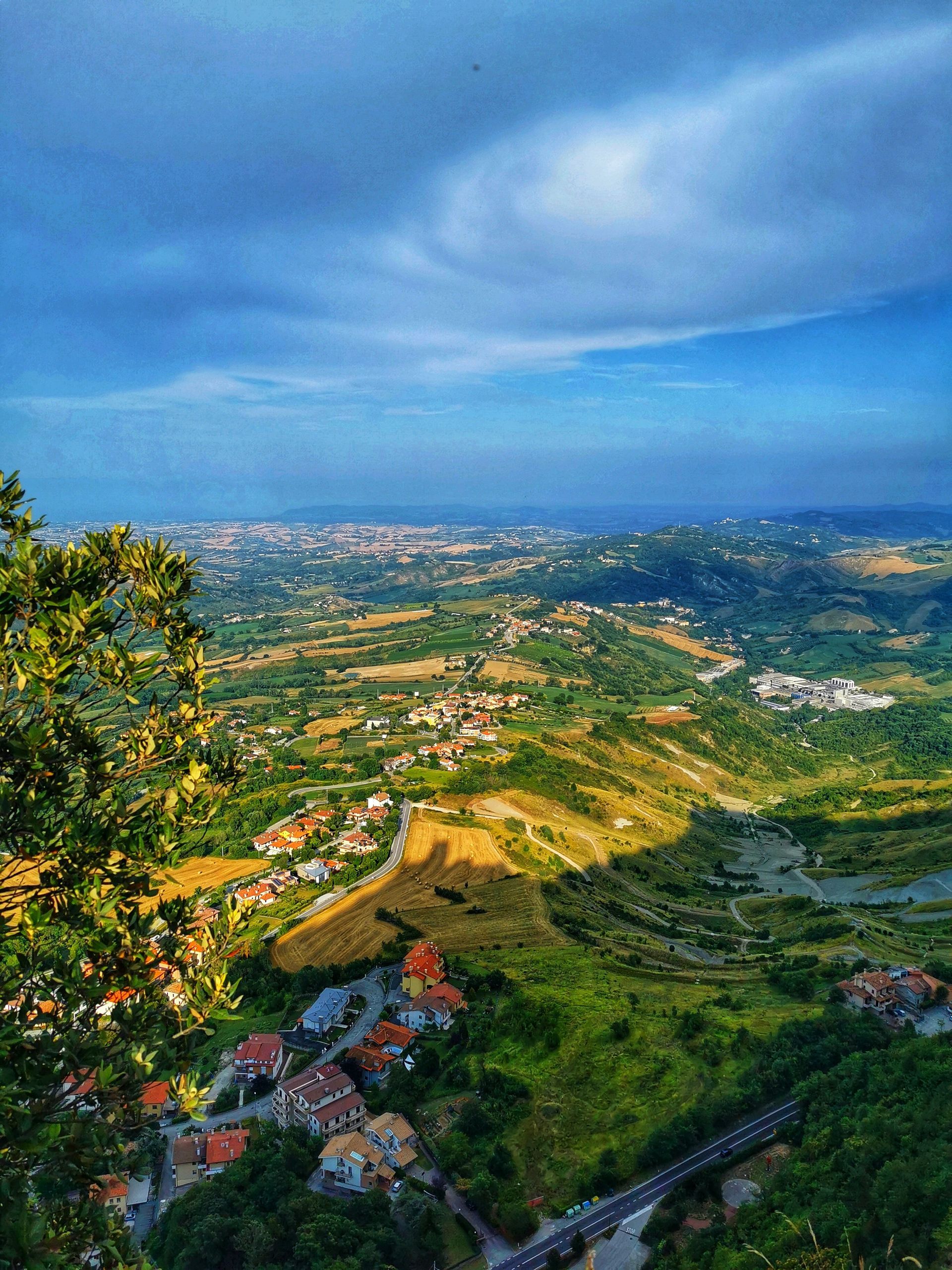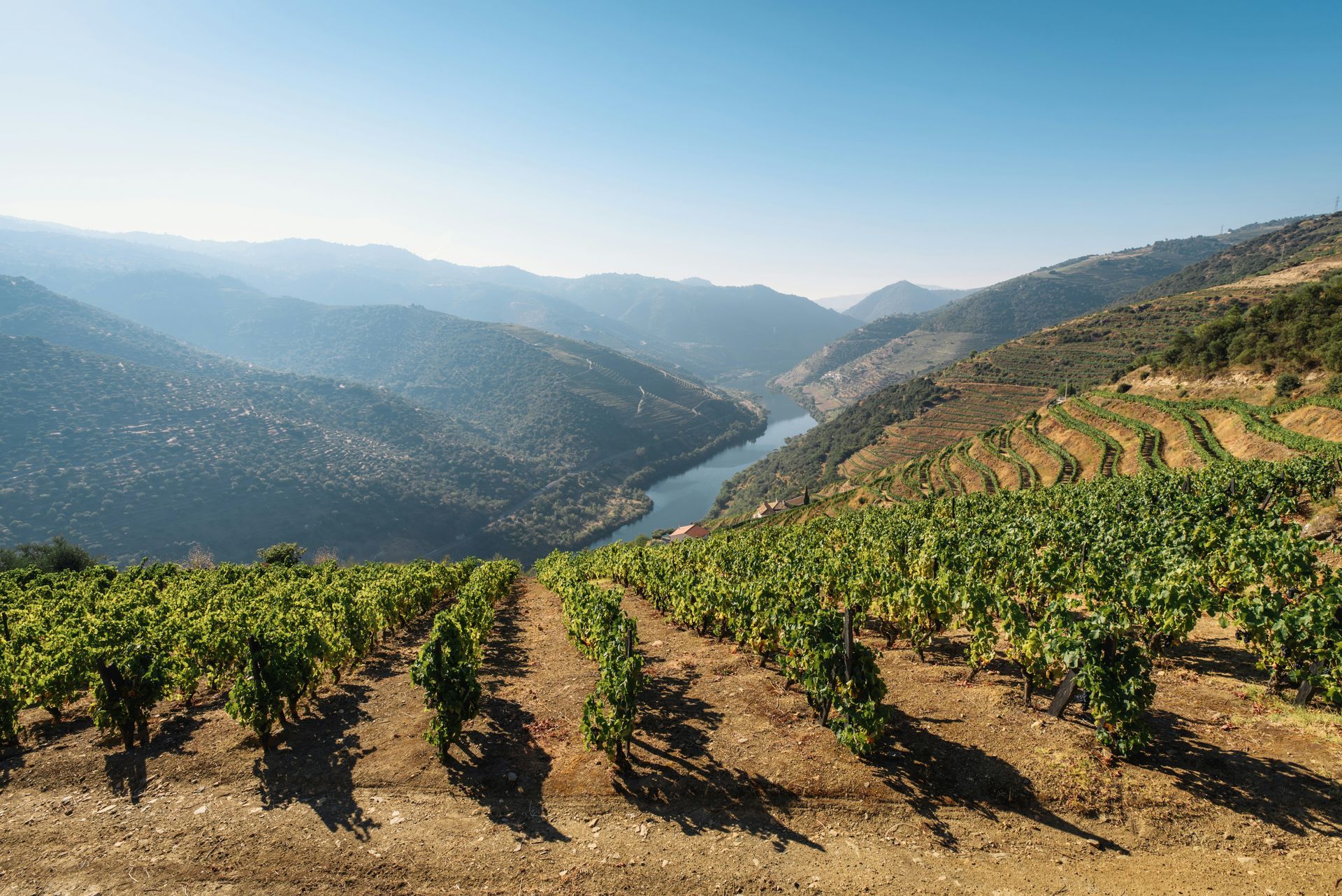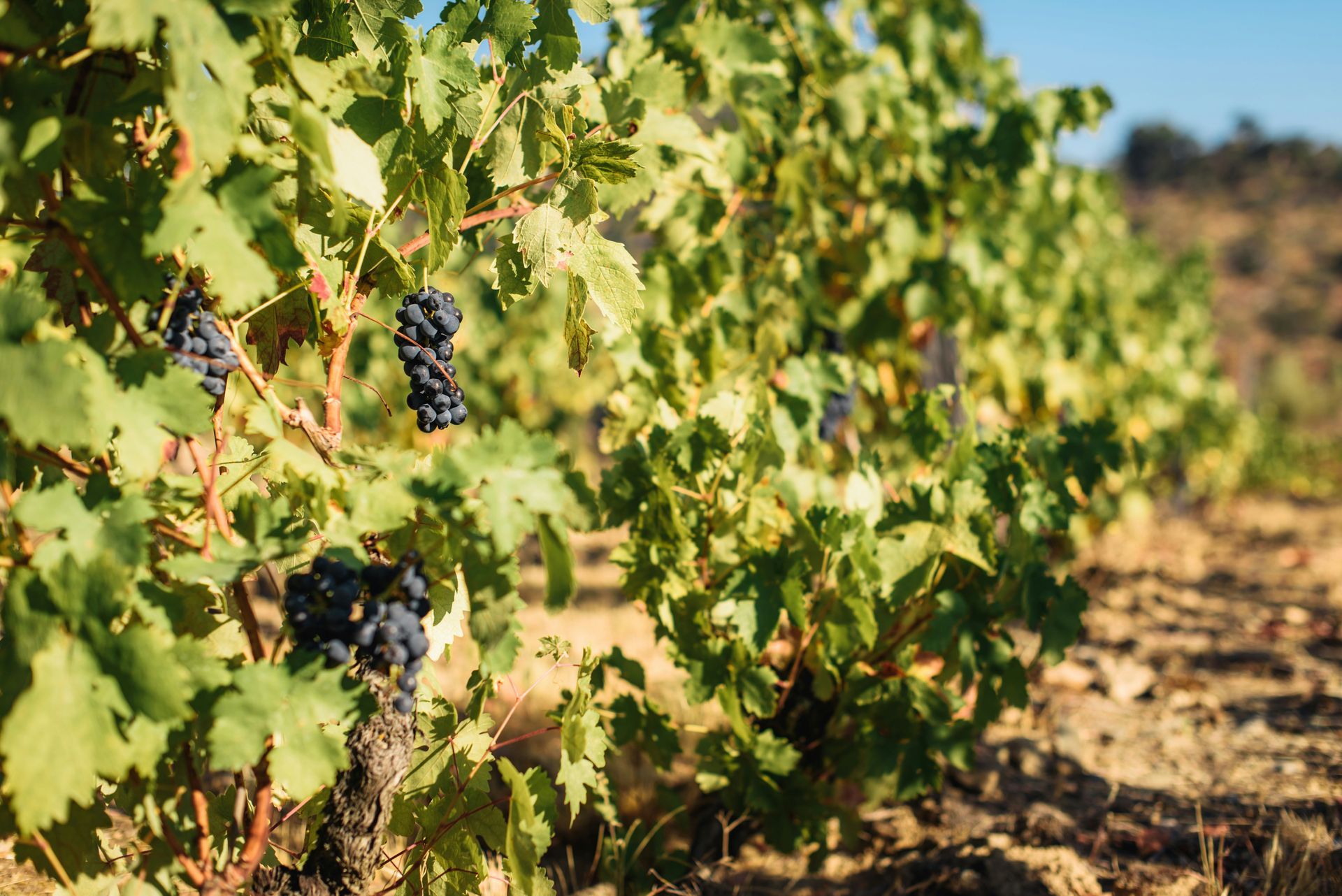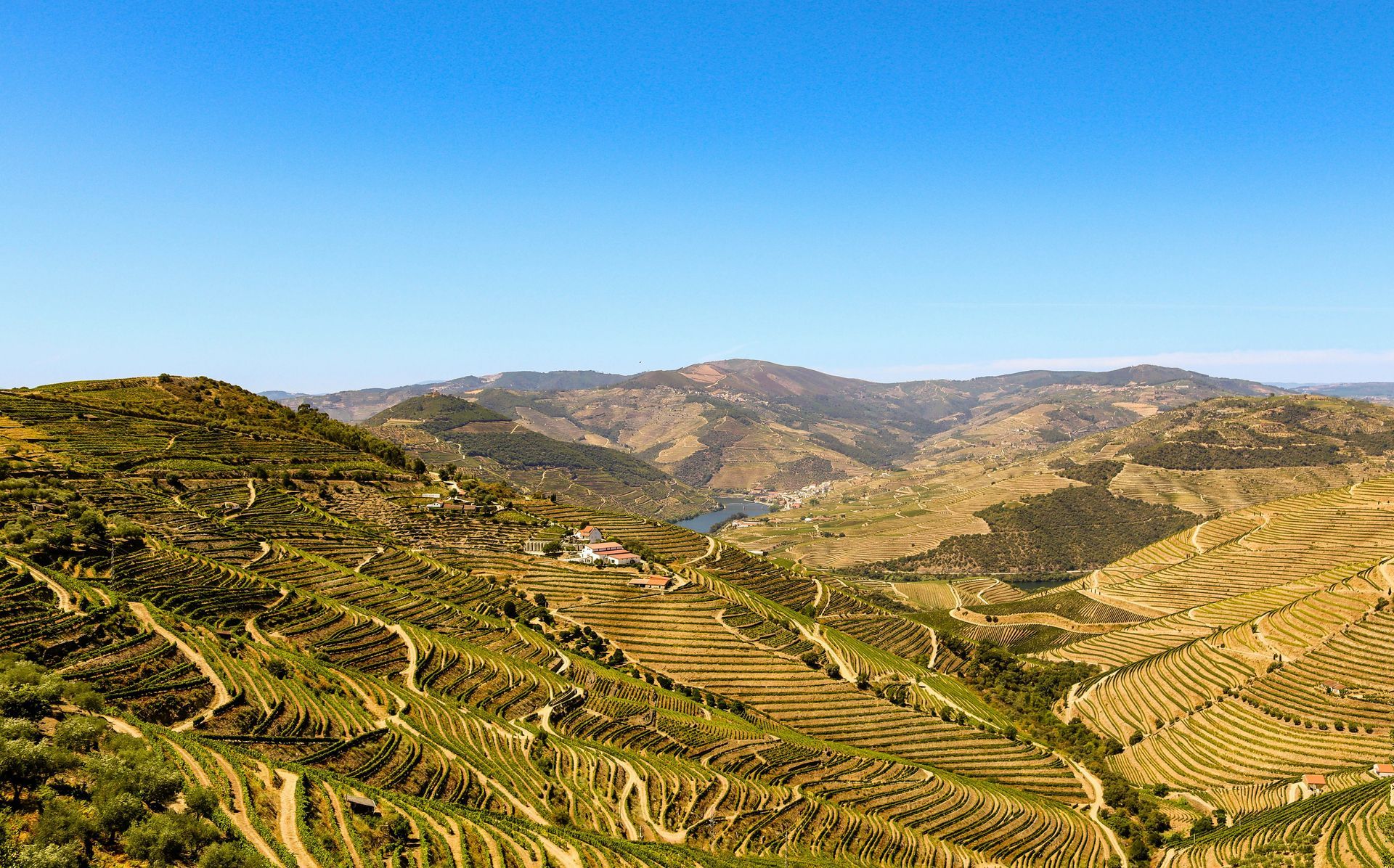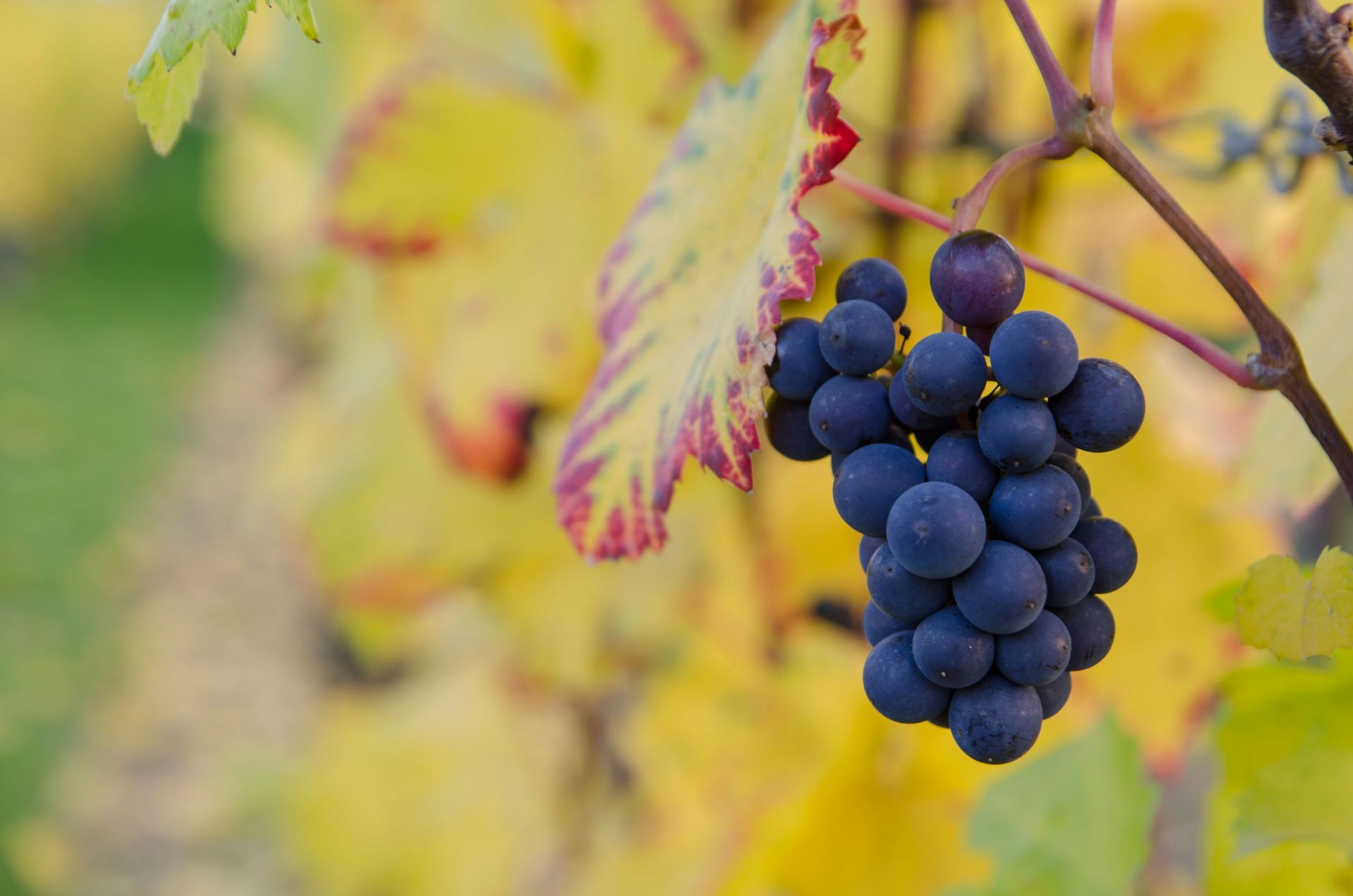Spreading Smile across the globe
Hidden Gems of Northern Italy
Hidden Gems of Italy are a testament to the country's diverse and enchanting beauty, often concealed from the traditional tourist routes. While Italy is celebrated for its iconic cities like Rome, Florence, Venice, and the Amalfi and Cinque Terre coasts, it's the lesser-known destinations that promise a unique journey. These unexplored regions offer travellers a chance to experience Italy's authentic culinary delights, rich historical narratives, and stunning natural landscapes. From the northern reaches to the southern shores, these Hidden Gems of Italy reveal a different facet of this remarkable nation.
Lake Orta - Piedmont
Hidden Gems of Italy come to life at Lake Orta, tucked away near the Swiss border in the heart of Piedmont. This hidden paradise often evades the spotlight compared to its more famous counterparts like Lake Como and Lake Garda. The historic town of Orta San Giulio, with its Baroque and Medieval architecture, cobbled streets, and idyllic Piazza Motta, enchants visitors. The glistening waters of the lake itself invite moments of serenity. What makes Lake Orta truly extraordinary is the mysterious island at its centre—a tranquil sanctuary inhabited by resident nuns.
Treviso - Veneto
Among the Hidden Gems of Italy, Treviso stands as a city in the Veneto region that retains its genuine northern Italian charm. Meandering through its narrow cobbled lanes, picturesque canals, and medieval city walls feels like a step back. Positioned on the fringes of the renowned Prosecco wine region, Treviso provides a delightful excuse for an aperitivo with a glass of Italy's renowned sparkling Prosecco.
Aosta Valley
Nestled among the bordering landscapes of Switzerland and France, the Aosta Valley showcases breathtaking alpine scenery, perched castles, and traditions that thrive throughout the year. When spring and summer arrive, the region's walking trails entice explorers. This season also brings lively festivals that celebrate folk traditions that date back to medieval times. Be sure to savour the local cheese Fontina, a culinary delight that embodies the spirit of this Hidden Gem of Italy.
Alba - Piedmont
Alba, a sought-after destination among Italy's hidden gems, is situated in the vineyards of the Langhe Hills. Once adorned with a hundred towers, Alba exudes a charming rural ambience. It's renowned for its autumn truffle festival, a gastronomic event that captures the essence of the region. Alba is also celebrated for its dark chocolate, hazelnut groves, white truffles, and prestigious wineries. It's from this very region that the sought-after Barolo wine originates.
Camogli - Liguria
Camogli, a typical and vibrant Italian seaside village on the Ligurian Riviera di Levante, perfectly embodies the spirit of the Hidden Gems of Italy. Towering, brightly painted houses dominate the town, and it has become a magnet for visitors seeking pristine beaches, Ligurian cuisine, the rustic fishing marina, Italian culture, and a tranquil natural setting. Camogli has earned its reputation for culinary excellence, focusing on fish and seafood, particularly anchovies and tuna, as well as the iconic pesto sauce made from basil and pine nuts.
Brescia - Lombardy
Hidden Gems of Italy often come alive through history, and Brescia is no exception. In this small city, history unfolds through a tapestry of architectural styles, spanning Roman, Medieval, Renaissance, Baroque, and even Art Deco. Walking through Brescia feels like a journey through time, and a visit to the captivating Piazza della Loggia, framed by a stunning Venetian-style palace at its heart, is a must for history enthusiasts.
Trieste
Trieste is a refreshingly unique destination, an Italian city positioned near the Slovenian border with its dialect that's a delightful blend of Austrian-German, Greek, Croatian, and Italian. Trieste's neoclassical waterfront is a sight to behold, with its marina brimming with stylish, glimmering yachts. The city's offerings include clear blue skies, expansive sandy beaches, city lidos, and the surrounding vineyards. Trieste is a Hidden Gem of Italy that belongs on every traveller's Northern Italian itinerary.
Modena - Emilia-Romagna
Modena is famed for its Hidden Gems of Italy, including balsamic vinegar, Luciano Pavarotti, the Romanesque cathedral, and the nearby Ferrari museum. Beyond these illustrious attractions, Modena reveals a treasure trove of remarkable restaurants. Massimo Bottura's Osteria Francescana has twice earned a place among the world's top 50 eateries, showcasing the culinary excellence of this Hidden Gem. While in Modena, don't miss the chance to savour local specialities like stuffed tortellini and sparkling Lambrusco wine, the perfect complement to your gastronomic journey.
Chiusa / Klausen - South Tyrol
Chiusa, also known as Klausen, is one of Italy's most picturesque villages. It is situated on the banks of the Isarco River in the South Tyrolean region near the Austrian border. Chestnut groves, green fields, vineyards, and farmsteads surround the town. In the village itself, visitors are captivated by narrow alleyways, coats of arms, large bay windows, crenellated facades, and the two main squares.
Ravenna - Emilia-Romagna
Ravenna offers a treasure trove of experiences among the Hidden Gems of Italy. This city is a feast for the senses, with its diverse offerings of food, music, art, culture, history, beaches, wine, and mosaics. Ravenna is home to eight UNESCO-listed sites, making it a must-visit for history and art enthusiasts. It's also known for its two-month-long music festival, Dante Alighieri's tomb, local culinary delights, nearby beach resorts, and the opportunity to explore pinewood forests. The city's fame is derived from its stunning mosaics, dating from the fifth and sixth centuries, scattered throughout the town.
In conclusion, Italy's Hidden Gems invite you to embark on a journey less travelled, where the rich tapestry of history, diverse cuisine, and breathtaking landscapes come to life. These lesser-known destinations provide an authentic Italian experience, away from the bustling crowds, revealing the nation's soul in its purest form. Explore these Hidden Gems to uncover Italy's hidden treasures.
Hidden Gems of Central Italy
Hidden Gems of Italy beckon the adventurous traveller to explore the lesser-known treasures that this remarkable country holds. From the picturesque valleys of Tuscany to the medieval charm of Umbria, the mysterious landscapes of Molise, and the architectural wonders of San Gimignano, these destinations promise unforgettable experiences.
Garfagnana - Tuscany
The Garfagnana region is a hidden gem in the beautiful Tuscan valley north of Lucca. It is crossed by the Serchio River, and the landscape is characterized by fertile greenery, rugged mountains, and charming villages. Outdoor activities such as hiking, walking, and mountain biking are enjoyed by many people in this area. Garfagnana is home to several one-of-a-kind attractions, including a ghost town, a wind cave, and the Devil's Bridge at Borgo a Mozzano.
Gubbio - Umbria
Umbria hides many treasures, and a particular favourite among Hidden Gems of Italy is the Medieval hilltop town of Gubbio. Gubbio, a city with a history dating back over 2,000 years, is a maze of cobbled streets and stone buildings that have been perfectly preserved. Visitors can take a cable car to the summit of Mount Ingino to enjoy panoramic views of the surrounding area. In addition, Gubbio hosts Italy's oldest event, the Corsa dei Ceri, in which teams race through the streets carrying massive wooden candles.
Molise
Molise is Italy's second-smallest region and one of its best-kept secrets. Hidden Gems of Italy are plentiful here. The picturesque town of Agnone is renowned for its artisanal bells, produced by the oldest family-run bell foundry in the world. Meanwhile, Campobasso, the regional capital, boasts a stunning medieval old town. Molise offers a captivating mix of historical charm and natural beauty, with rugged mountains, rolling hills, and pristine beaches along the Adriatic coast.
San Gimignano - Tuscany
Nestled in the heart of Tuscany, San Gimignano boasts medieval architecture and, of course, its famous towers. The town's historic centre is a UNESCO World Heritage site, known for its fourteen stone towers that once symbolised wealth and power. San Gimignano offers a glimpse into medieval Tuscany, with well-preserved streets and squares that transport visitors to another time. Besides the towers, make sure to explore the Collegiate Church and indulge in the local Vernaccia wine, a crisp white wine produced in the region.
Spello - Umbria
Another gem in the heart of Italy, Spello enchants visitors with its winding medieval streets and stunning floral displays. Known as the "Città Infiorata" or "flower town," Spello hosts the Infiorata festival, during which the streets are carpeted with intricate flower petal designs. This event occurs in early June and is a magnificent spectacle. Outside of the festival, Spello's charm continues with its well-preserved historic centre and beautiful churches.
Trulli of Alberobello - Apulia
Apulia, or Puglia, is famous for its unique trulli houses, and Alberobello is the epicentre of this architectural marvel. These whitewashed conical homes are a UNESCO World Heritage Site that offers a glimpse into the region's history. Visitors can even stay in trulli that have been converted into accommodations, providing a truly immersive experience.
Norcia - Umbria
Nestled in the Sibillini Mountains, Norcia is renowned for its gastronomy. This charming town produces exceptional cured meats, particularly prosciutto and salami. For food enthusiasts, Norcia is a true Hidden Gem of Italy. Explore local shops, taste the region's specialities, and visit the beautiful town square. Nature enthusiasts will also find hiking trails and natural beauty in the nearby Monti Sibillini National Park.
Montefalco - Umbria
Montefalco is often called the "Balcony of Umbria" for its stunning views over the surrounding valley. This charming town is also known for its wine, particularly Sagrantino, one of Italy's most robust red wines. Montefalco's medieval centre is picturesque and hosts several churches with remarkable frescoes, making it a cultural and gastronomic gem.
Castelluccio di Norcia - Umbria
High in the Sibillini Mountains, Castelluccio di Norcia is a quaint village known for its stunning wildflower blooms in late spring and early summer. The surrounding plateau becomes a colourful tapestry, attracting photographers and nature enthusiasts. Besides the flowers, visitors can enjoy hiking and take in the breathtaking scenery. Hidden Gems of Italy like Castelluccio di Norcia provide a unique connection to nature and the changing seasons.
In the heart of Italy, a treasury of Hidden Gems awaits the intrepid traveller. From the mysterious ghost town of Garfagnana to the ancient charms of Gubbio, the enchanting landscapes of Molise, and the medieval splendours of San Gimignano, these lesser-known destinations reveal Italy's diverse beauty and rich history. Journey through the tranquil streets of Spello, marvel at the unique trulli houses in Alberobello, savour the culinary delights of Norcia, and bask in the vibrant blooms of Castelluccio di Norcia. These Hidden Gems of Italy promise an unforgettable adventure in a land of timeless wonder.
Hidden Gems of Southern Italy
Italy, a land of rich history, captivating art, and exquisite cuisine, is known for its iconic cities and world-famous landmarks. Despite the tourist-filled streets and crowded piazzas, the country holds many hidden gems—lesser-known destinations that offer a more intimate and authentic experience. These places, tucked away in various corners of Italy, are a testament to the nation's diverse and enchanting beauty, waiting to be explored by the discerning traveller. From medieval towns perched atop hills to charming coastal villages and ancient archaeological sites, the Hidden Gems of Italy promise unique adventures and unforgettable memories.
Civita di Bagnoregio - Lazio
Civita di Bagnoregio is often called the "Dying Town" because of its gradual erosion over the centuries. This medieval village is perched on a hilltop and can only be reached by a long footbridge. It's a unique destination, seemingly suspended in time, and is the perfect Hidden Gem for history buffs and photographers.
Matera - Basilicata
Matera, known for its cave dwellings, is one of Italy's most intriguing and unique destinations. The Sassi di Matera, a historic cave settlement, is a UNESCO World Heritage Site. Matera is gaining popularity but still qualifies as one of the Hidden Gems of Italy. Touring this labyrinth of stone-carved rooms and narrow streets offers an incredible historical journey.
Sperlonga - Lazio
Sperlonga is a charming coastal town characterized by its pristine beaches, winding alleys, and picturesque piazzas. Nestled between Rome and Naples, Sperlonga is often overlooked by travellers. A visit here reveals a relaxed and authentic Italian atmosphere, perfect for strolls and seaside relaxation. Take advantage of the Grotto of Tiberius, a cave once used as the emperor's villa and now a museum.
Paestum - Campania
The ancient ruins of Paestum, originally a Greek colony known as Poseidonia, provide an extraordinary window into Italy's history. The temples are exceptionally well-preserved, ranking among the best-preserved in the world. Paestum is also home to a fascinating archaeological museum that displays artefacts from the site. Enjoy a step back in time amid the Hidden Gems of Italy.
Castro - Apulia
Castro, a picturesque coastal town, boasts a historic centre perched on a rocky outcrop. Visitors can explore ancient churches, fortifications, and a charming harbour. Castro also has sea caves that can be explored by boat. The region's cuisine is a seafood lover's paradise, making this town a Hidden Gem for food enthusiasts as well.
Scilla - Calabria
Scilla, an idyllic coastal village in Calabria, offers stunning sea views and hidden beaches. The town is known for the Ruffo Castle, which dominates the landscape, and the legendary sea monster Scylla from Greek mythology. The charming village is a serene and lesser-known alternative to some of the more crowded Italian seaside destinations.
San Marino
San Marino is a microstate surrounded by Italy and is one of the world's oldest republics. It's a destination that's often missed, making it a true Hidden Gem. San Marino boasts dramatic mountaintop views, historic architecture, and unique attractions like the Guaita Tower and the Palazzo Pubblico. For collectors, the country is also known for its beautiful stamps and coins.
Conclusion
Discovering the Allure of Hidden Gems of Italy
Hidden Gems of Italy offers travellers an authentic experience, far removed from the tourist-packed cities and famous landmarks. These lesser-known destinations unravel the genuine charm, culture, history, and culinary wonders that make Italy an endlessly fascinating country to explore. From the mountains of the North to the coasts of the South, each region holds its treasures, waiting to be discovered by those who venture off the beaten path. By exploring the Hidden Gems of Italy, you can craft a unique and unforgettable journey that deepens your appreciation of this incredible country. Plan your trip carefully, and you will be rewarded with the beauty, history, and flavours that characterize these enchanting places.
Best Time to Visit Douro Valley
Located in the heart of Portugal, the Douro Valley is an alluring destination that attracts travelers globally. Offering breathtaking landscapes, a profound history, and a world-renowned wine culture, the Douro Valley provides visitors with a distinctive fusion of natural beauty, cultural heritage, and gastronomic delights. Selecting the optimal time to explore this enchanting destination is crucial for immersing oneself in its diverse attractions and seasonal wonders. From the vibrant blooms of spring to the golden hues of autumn, each season in the Douro Valley has its allure, inviting travellers to embark on a memorable journey through its storied vineyards and picturesque villages.
Douro Valley:
Exploring the Douro Valley reveals not just a wine region, but a living testament to centuries of winemaking tradition and innovation. The terraced vineyards that cascade down the valley's hillsides are a testament to the ingenuity and labour of generations past, while the quaint villages and historic estates dotted along the riverbanks offer glimpses into the region's rich cultural tapestry. Whether you're sipping port wine in a sun-soaked vineyard or exploring centuries-old wine cellars carved into the hillsides, the Douro Valley is a place where past and present converge in a celebration of wine, culture, and natural beauty.
Throughout the year, the Douro Valley undergoes a remarkable transformation, each season casting its spell over the landscape. In spring, the valley bursts into life with the vibrant colours of almond and cherry blossoms, signalling the beginning of a new growing season. Summer brings long, sunny days and bustling vineyards, as grapes ripen on the vine under the warm Portuguese sun. Autumn paints the hillsides in shades of gold and crimson, as the valley comes alive with the sights and sounds of the grape harvest. In winter, the valley takes on a quiet, introspective charm, inviting visitors to cosy up by the fireplace with a glass of port wine and immerse themselves in the region's rich winemaking heritage.
As travellers plan their visit to the Douro Valley, it's important to consider the unique charms offered by each season. Whether you're drawn to the lively atmosphere of summer festivals or the tranquil beauty of a winter retreat, there's no shortage of opportunities to discover the magic of this enchanting destination. With its timeless landscapes, rich cultural heritage, and world-class wines, the Douro Valley invites visitors to embark on a journey of discovery and exploration, where every season offers new wonders to behold and cherished memories to be made. Experience the allure of the Douro Valley, where each visit promises an unforgettable adventure into the heart of Portugal's wine country.
Spring: Blossoms and Renewal
Visit Douro Valley during the spring months, typically from March to May, to experience the valley's rejuvenation as it emerges from its winter slumber. Spring bestows upon Douro Valley a vibrant transformation, painting its landscape with a kaleidoscope of colours as almond and cherry blossoms adorn the hillsides, infusing the region with a picturesque charm. These blossoms serve as nature's canvas, offering a stunning backdrop for outdoor adventures and explorations.
The moderate temperatures and flourishing flora of spring make it an opportune time for various outdoor activities in Douro Valley. From leisurely hikes along scenic trails to invigorating cycling excursions through winding pathways, visitors can fully immerse themselves in the valley's natural splendour. The rural landscape awakens with the scent of blossoming flowers and the soft whisper of leaves, crafting a magical atmosphere for those who venture into its heart.
One of the most captivating aspects of visiting Douro Valley during spring is witnessing the inception of a new growing season in its vineyards. As the valley awakens to the promise of renewal, the vineyards stir with activity as grapevines are meticulously tended to by skilled hands. Visitors have the unique opportunity to observe the beginning stages of grapevine cultivation and winemaking processes, gaining insight into the age-old traditions and techniques that define Douro Valley's winemaking heritage.
Spring in Douro Valley offers more than just a feast for the eyes; it provides a tranquil escape from the frenetic pace of urban life. Away from the hustle and bustle of city streets, travellers can bask in the serenity of nature's beauty and the valley's peaceful ambience. Whether meandering through blooming orchards, picnicking amidst verdant vineyards, or simply revelling in the tranquillity of the countryside, Douro Valley beckons visitors to embrace the slower rhythms of life and savour the simple pleasures that abound.
Spring is an idyllic time to visit Douro Valley, offering a harmonious blend of natural beauty, cultural heritage, and outdoor adventures. From the radiant blossoms that adorn the landscape to the tranquillity that permeates the air, the valley welcomes travellers to immerse themselves in its splendour and discover the wonders that await around every corner. A visit to Douro Valley in spring promises not only unforgettable experiences but also a profound connection to the timeless rhythms of nature and the enduring spirit of this captivating region.
Summer: Sun-drenched vineyards and Festive Atmosphere
Visit Douro Valley in summer as it casts a warm and vibrant spell, drawing in visitors who are eager to experience the valley's rich wine culture and breathtaking landscapes. From June to August, the valley experiences long, sun-drenched days and balmy temperatures, creating an inviting atmosphere for exploration and adventure. This season is particularly popular among wine enthusiasts and outdoor adventurers alike, as Douro Valley offers a plethora of activities to enjoy under the summer sun.
Visiting Douro Valley during the summer months presents an excellent opportunity to embark on vineyard tours, wine tastings, and river cruises. The warm weather sets the stage for strolls through lush vineyards, where visitors can learn about the region's winemaking traditions and sample its renowned vintages. Wine events and festivals abound during this time, showcasing the valley's vibrant culture and culinary delights. From traditional celebrations to modern gatherings, there's no shortage of opportunities to immerse oneself in Douro Valley's lively atmosphere and convivial spirit.
The Douro River takes centre stage during the summer months, becoming a focal point for leisure and recreation. Boat tours offer visitors panoramic views of the valley's terraced vineyards and historic wine estates, allowing them to appreciate the region's scenic beauty from a unique perspective. Whether cruising along the tranquil waters or embarking on a thrilling adventure, the Douro River provides a refreshing escape from the summer heat.
Summer in Douro Valley is a time of abundance and vitality, where the landscape teems with life and energy. Visitors are invited to savour the flavours of local cuisine, which showcase the region's rich culinary heritage and fresh, seasonal ingredients. From hearty stews to grilled meats and fresh seafood, Douro Valley offers a diverse array of gastronomic delights to please every palate. Dining al fresco amidst the vineyards or enjoying a leisurely meal at a charming riverside restaurant, visitors can indulge in the region's renowned hospitality and warm, welcoming ambience.
Summer in Douro Valley is a magical season filled with endless possibilities for exploration and discovery. Whether sipping wine amidst the vineyards, cruising along the Douro River, or sampling local delicacies, visitors are sure to be captivated by the valley's charm and allure. A visit to Douro Valley during the summer months promises unforgettable experiences and cherished memories, as travellers immerse themselves in the region's rich cultural heritage and natural beauty.
Autumn: Harvest Season and Spectacular Scenery
Autumn in Douro Valley heralds a breathtaking transformation, captivating visitors with its vibrant colours and intoxicating aromas. From September to November, the valley undergoes a remarkable metamorphosis, making it an irresistible destination for wine aficionados and nature enthusiasts alike. As the season unfolds, Douro Valley becomes a symphony of sights and sounds, with vineyards abuzz with the excitement of the grape harvest.
You can Visit Douro Valley during autumn as it offers a rare opportunity to witness the winemaking process in action. From grape picking to crushing and fermentation, visitors can observe firsthand the meticulous craftsmanship and time-honoured techniques that go into producing the region's renowned wines. The valley comes alive with the sounds of grape pickers at work and the scent of ripe fruit hanging heavy in the air, creating an atmosphere of anticipation and celebration.
One of the most captivating aspects of autumn in Douro Valley is the breathtaking display of colours that envelop the landscape. The rolling hillsides are adorned with a tapestry of golden hues as vine leaves turn crimson and orange, casting a spellbinding spell over the countryside. Scenic drives and leisurely walks offer visitors the opportunity to immerse themselves in the splendour of the season, with each turn revealing a new vista of awe-inspiring beauty.
Autumn also beckons cultural exploration, with a myriad of wine festivals, culinary events, and traditional harvest celebrations taking place throughout the valley. From lively gatherings to intimate tastings, these events provide insight into the region's rich winemaking heritage and offer a chance to sample its finest vintages. Visitors can partake in grape stomping festivities, indulge in local delicacies, and revel in the convivial atmosphere that permeates Douro Valley during this festive season.
Winter: Cozy Retreats and Wine Tastings
Winter in Douro Valley unfolds as a serene and inviting season, beckoning travellers to embrace its tranquil charm and cosy ambience. From December to February, the valley undergoes a subtle transformation, offering a peaceful retreat from the hustle and bustle of everyday life. For those seeking tranquillity and relaxation, winter proves to be an ideal time to visit Douro Valley, where a sense of serenity pervades the air.
The winter months in Douro Valley bring cooler temperatures and occasional rainfall, creating a refreshing contrast to the warmth of summer. As the valley settles into its winter slumber, visitors are invited to partake in a variety of indoor activities and cultural experiences. Wine tastings take centre stage during this time, offering intimate gatherings by crackling fireplaces where guests can sample the region's finest vintages and learn about winemaking traditions from knowledgeable hosts.
Exploring the Douro Valley during the winter season provides a distinctive chance to engage in the area's abundant winemaking legacy and welcoming hospitality. The valley's charming villages and historic estates welcome visitors with open arms, offering authentic experiences and traditional Portuguese cuisine that epitomize the essence of the region. Hearty meals, paired with robust red wines, provide a comforting respite from the winter chill, inviting guests to savour the flavours of the season and indulge in the valley's culinary delights.
Winter in Douro Valley is a time of quiet beauty and reflection, where visitors can reconnect with nature and unwind amidst the vineyard-covered hills and picturesque landscapes that define this enchanting region. Scenic vistas abound, offering glimpses of mist-covered valleys and rolling hillsides adorned with vineyards dormant in their winter repose. Whether embarking on leisurely walks through quaint villages or simply admiring the natural beauty that surrounds them, travellers are invited to embrace the slower pace of winter and revel in the tranquillity of their surrounding
Choosing Your Perfect Time to Visit Douro Valley
The best time to visit Douro Valley depends on your preferences, interests, and desired experiences. Whether enticed by the lively blossoms of spring, the sun-soaked vineyards of summer, the breathtaking landscapes of autumn, or the snug retreats of winter, the Douro Valley presents an array of delights for every traveler. Visit Douro Valley and embark on a journey through its timeless landscapes and rich cultural heritage, where each season unveils new wonders and opportunities for exploration. From wine tastings and vineyard tours to scenic hikes and cultural festivals, Douro Valley invites visitors to discover the beauty, flavours, and traditions that make it one of Portugal's most captivating destinations.
Things To Do | Travel Information | Local's Favourites




